-
Posts
1,041 -
Joined
-
Last visited
Content Type
Profiles
Forums
Gallery
Events
Posts posted by Ferrus Manus
-
-
#2. The shrouds.
This should come as a surprise to no one, but in 1441, a caravel would not have carried any kind of ratlines. Let's take a look at some more caravels (from Steven's collection obviously) and pay special regard to the shroud arrangements.
Three pairs on the main, two on the mizzen:
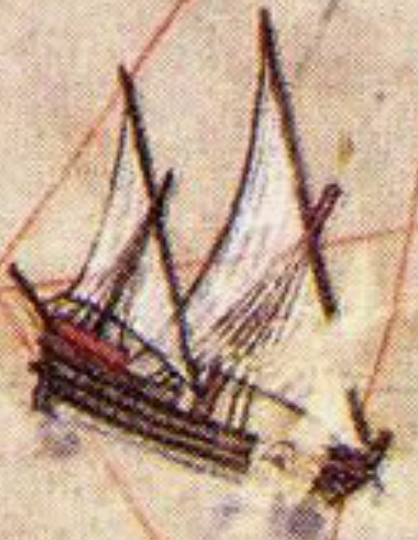
Two pairs on the mizzen and bonaventure, three(?) on the main
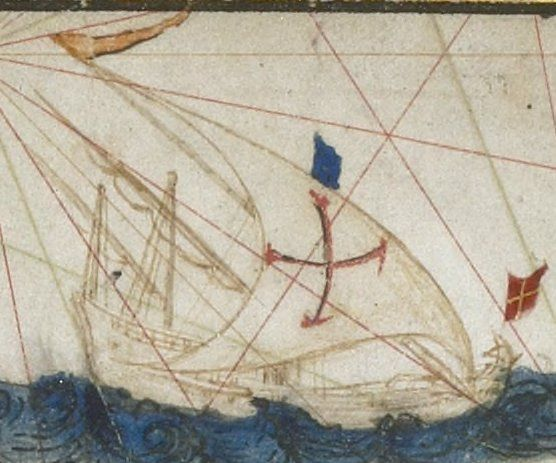
Likely three on the main and two on the mizzen (bottom left)
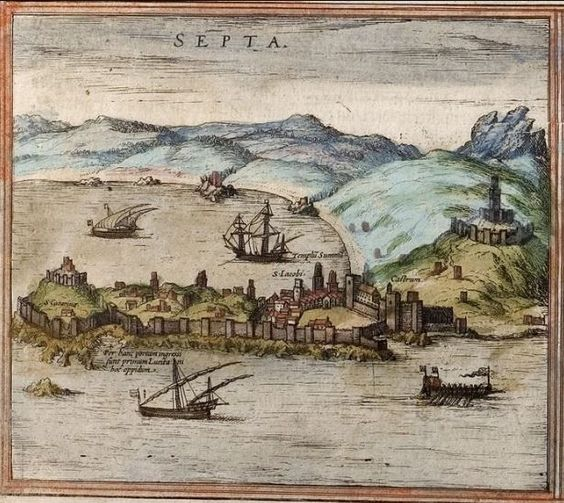
For the purposes of this model, i have chosen to use three pairs of shrouds on the main, and two on the mizzen. These shrouds are inboard the bulwarks, and will use two single blocks per shroud, with the origin of the lanyard being the upper block and the fall being the strop for the lower block. I will elect as well to use toggles on at least the main, probably also the mizzen shrouds (easier shroud removal/dismasting)
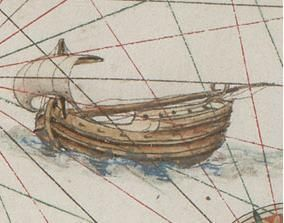
For a better picture of exactly how the shrouds were set up, let's look at some carracks (bigger ships=more central in paintings=more detail).
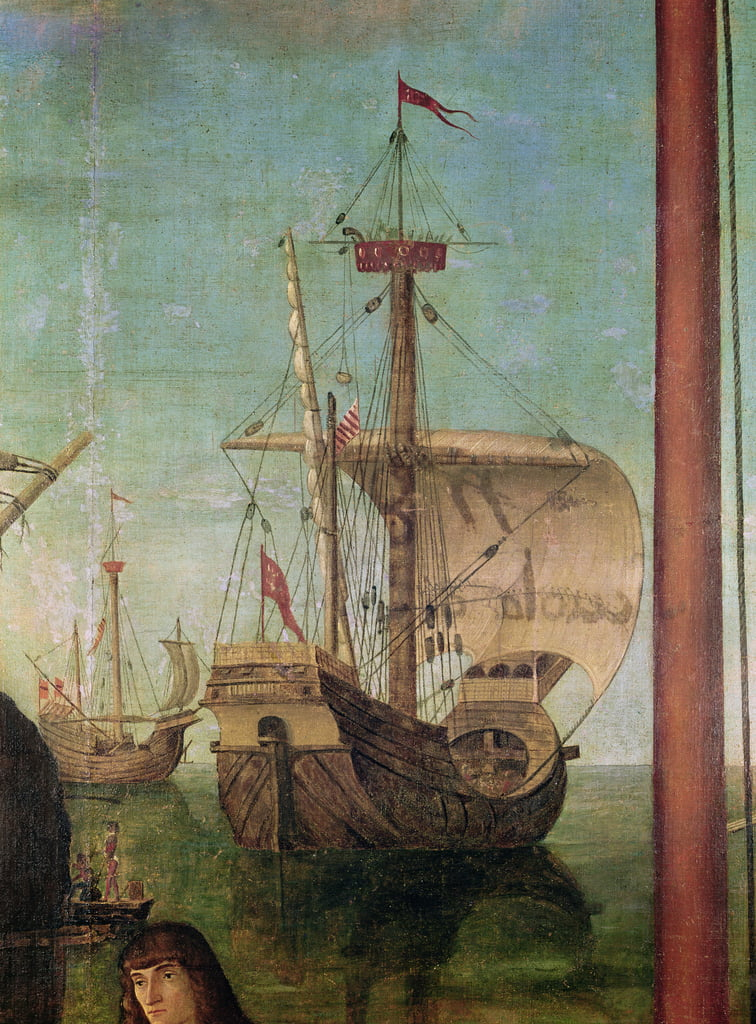
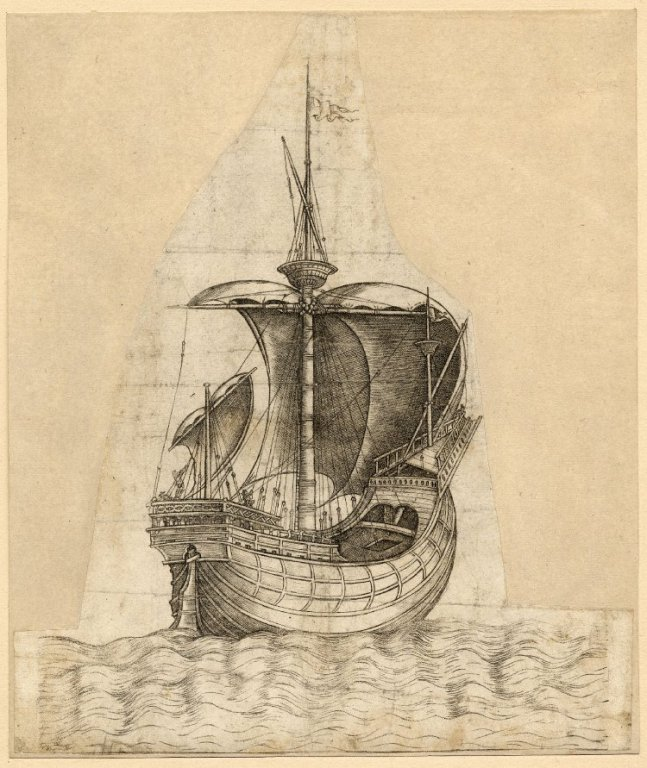
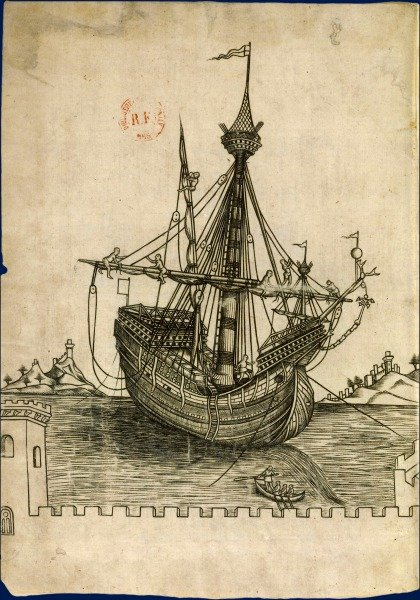
All of these show the same arrangement of shrouds. The only difference being on carracks, they were sometimes outboard the bulwarks, a position that would have been unmanageable on a caravel. For more information, look at @woodrat's carrack.
-
Same, but i would also add that you should not weather as much in high-traffic areas on the deck, as filth would not have as much of an opportunity to build up there.
- BANYAN, Glen McGuire, Louie da fly and 2 others
-
 4
4
-
 1
1
-
Now, we should get started in defining the lines that would and would not have existed on a caravel. Let's start with the obvious.
#1. Brails and clew lines.
Not a single one of the caravel paintings i have seen include either brails or clew lines on any of the sails. This is even when they are depicted as existing on other ships in the same painting (i.e. the Santa Catarina image, which includes an obvious clew block, the artist forgot to draw the actual line). More than even that, we know how impractical it would be to have clews and brails owing to how the sails tacked. Every image of a caravel shows the sail and yard as being outside the shrouds. The way you tack a lateen sail that's outside the shrouds is by allowing the sail to blow in front of the mast, then pivoting the sail and yard around the front of the mast. For that reason, every single line attached to the sail or yard must be pivoted with the yard, or taken around both the shrouds and mast to the other side.
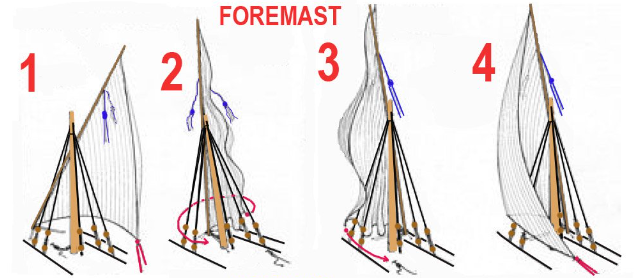
Furthermore, we have proof that they got by just fine without brails or clew lines:
This painting from 1546 (over a hundred years later, but still legitimate) shows the taking in of sail on the deck:
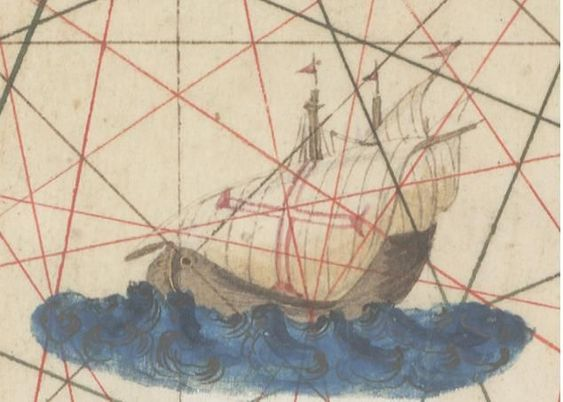
And this image shows the setting of sails aloft. The way the sails are behaving proves that neither clew lines nor brails were present on these sails. This is a painting from 1565 showing the Portuguese caravels and carracks doing battle.
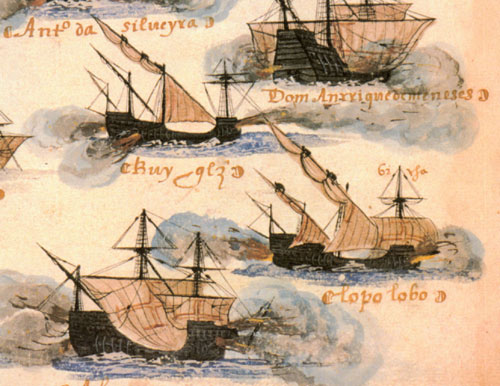
Look at how the men are climbing the yard in order to release the furling ropes that bind the sail to the mast. This painting also proves the use of peak halyards on at least some caravels.
P.S. notice how both paintings include peak halyards, but the diagram doesn't. The reason why modern caravel replicas include brails and clew lines is likely for safety purposes (not having men go aloft), and models (even museum models!!) are based on these modernized replicas.
-
I already have. Look at this picture:
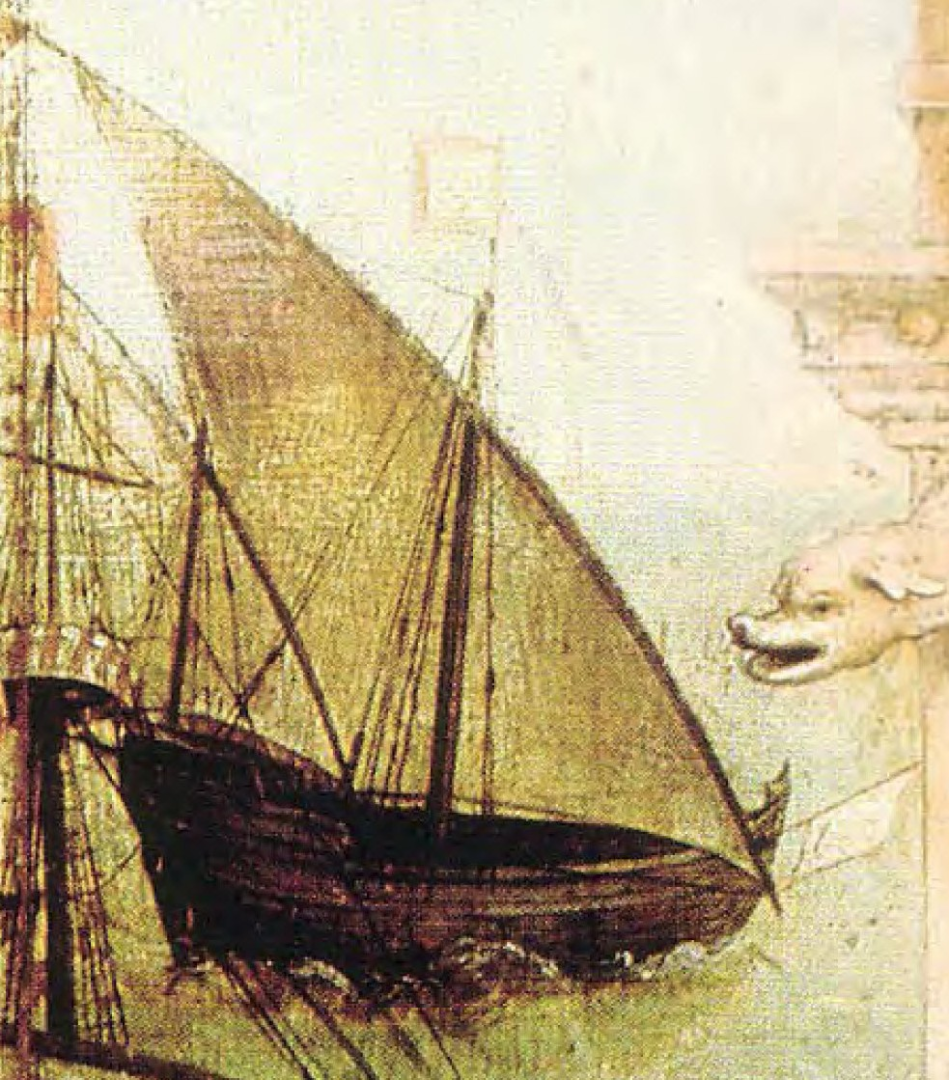
this image seems to show a caravel with a peak halyard emanating from about a third of the way up the yard from the mast, and running through a block or thimble and belaying somewhere at the sterncastle. Do you see it?
-
34 minutes ago, Louie da fly said:
The rigging in this pic would be the standard rigging for a lateener, but I agree you're best checking out the contemporary imagery for yourself to confirm or discard what is shown here.
I have learned from you that a theoretical reconstruction, as accurate as it may be, is just a theory and not necessarily indicative of reality. I believe i also found evidence of a line he excluded in his drawing.
-
This is Bjorn Landstrom's theoretical reconstruction of a Portuguese caravel.
This is likely the best reconstruction we can use as a base for our research.
There are two different kinds of caravels: the caravela latina and the caravela rotunda. We will be building a caravela latina, with lateen sails. Caravela latinas used lateen sails on two or three masts: a main, and one or two mizzens. A caravela rotunda had a foremast and a bowsprit, and was square-rigged on the first two masts, as per the top illustration.
My goal for the next couple days will be to prove or disprove the use of several rigging elements seen in the picture. This will require me to gather evidence from period paintings.
Because no Lisbon model has ever been found, and likely would have been destroyed in 1755 had it existed in the first place, all i will have to work with is thin painted lines on over 500-year-old vellum.
Wish me luck!
-
As always, @Louie da fly saves the day! I now have the source material i need to review before the kit shows up.
-
Hello fellow shipwrights, i have, since i built my San Gabriel, wanted to build a Portuguese caravel. The kit should be here by Monday, so this is, for now, just a research log.
My goal is to impress Woodrat and Steven (and myself) by only using firsthand, contemporary (or near-contemporary) sources for this theoretical reconstruction of a Portuguese caravel. This ship is based on the Heller Nina kit, which leaves a lot to be desired OOB, and this gives me a huge canvas for introducing historically accurate features into the build. My first order of business is to obtain a reliable feed of information. Or, i could just wait until Steven is done with his San Marco ship, and steal whatever rig he decides to use.
This is what the ship should look like when it's finished:
- ccoyle, GrandpaPhil and Jsk
-
 3
3
-
-
With the finished anchors, flags, and stand, we now are left with a finished Mayflower. I told you guys i would have this done by the new year.
While this ship might not be perfect, it's certainly good enough. I tried things i had never attempted before, and i did things that i never thought i would be able to do. I believe i advanced my abilities with this one, and set new standards that will remain in place for builds to come. While some parts of the build might not be perfect, or perfectly accurate, Uncle Jay won't care. He will think it's an amazing piece of art and worthy of a place in a museum, and i won't correct him.
This ship holds a special place in my heart. Without the inconsequential little galleon we know as the Mayflower, the nation in which i live would not exist. Without the motley crew of outcasts and religious refugees looking for purity, honesty and prosperity, history would have turned out much different.
Thank you for sticking around for this one. Thank you for the encouragement (you know who you are) with respect to the shrouds and ratlines, and even though this build didn't involve a lot of talking, i still felt your presence. Happy New Year, and i hope that your 2024 is better than your 2023, however good or bad this year may have been for you. I will see you all next time, probably very soon.
Until then, fair winds and calm seas.
- kirill4, Thukydides, ccoyle and 3 others
-
 6
6
-
-
- GrandpaPhil and Knocklouder
-
 2
2
-
- GrandpaPhil and ccoyle
-
 2
2
-
- Baker, GrandpaPhil, Shipyard sid and 1 other
-
 4
4
-
On 12/20/2023 at 9:57 AM, popeye2sea said:
Maybe a piece of uranium would do? 😜
As long as it's not critical mass, you should be fine. If it is, you're dead in a week.
-
-
Thanks! Stick around, it gets better.
-
I can get away with erroneous rigging and shoddy repairs on this build, because that's probably how the real Mayflower looked at the time of her Atlantic crossing.
-
And yes, running rigging is much better and more fun than ratlines.
-
-
- Baker, Isaiah and GrandpaPhil
-
 3
3
-
Merry Christmas, Steven! This ship is really coming along, and i like the paint job.
- mtaylor and Glen McGuire
-
 2
2
-
- kirill4, GrandpaPhil and Baker
-
 3
3
-
- GrandpaPhil, BLACK VIKING, Baker and 1 other
-
 4
4


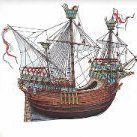
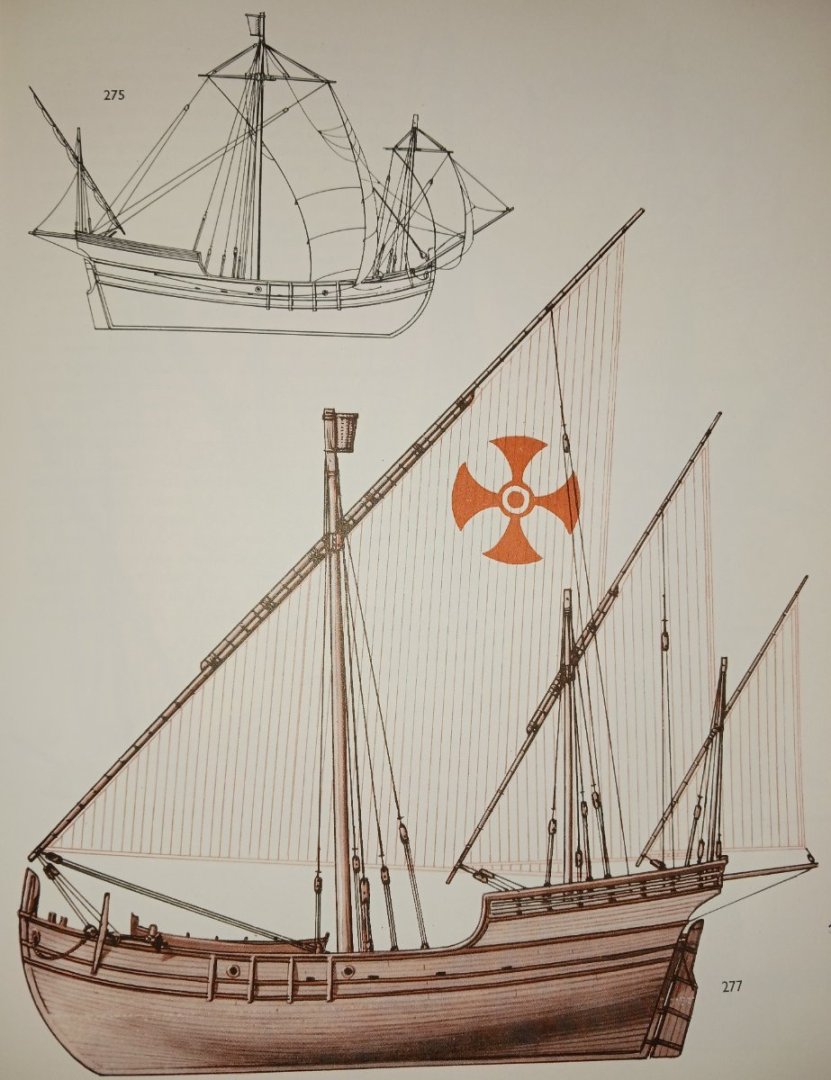
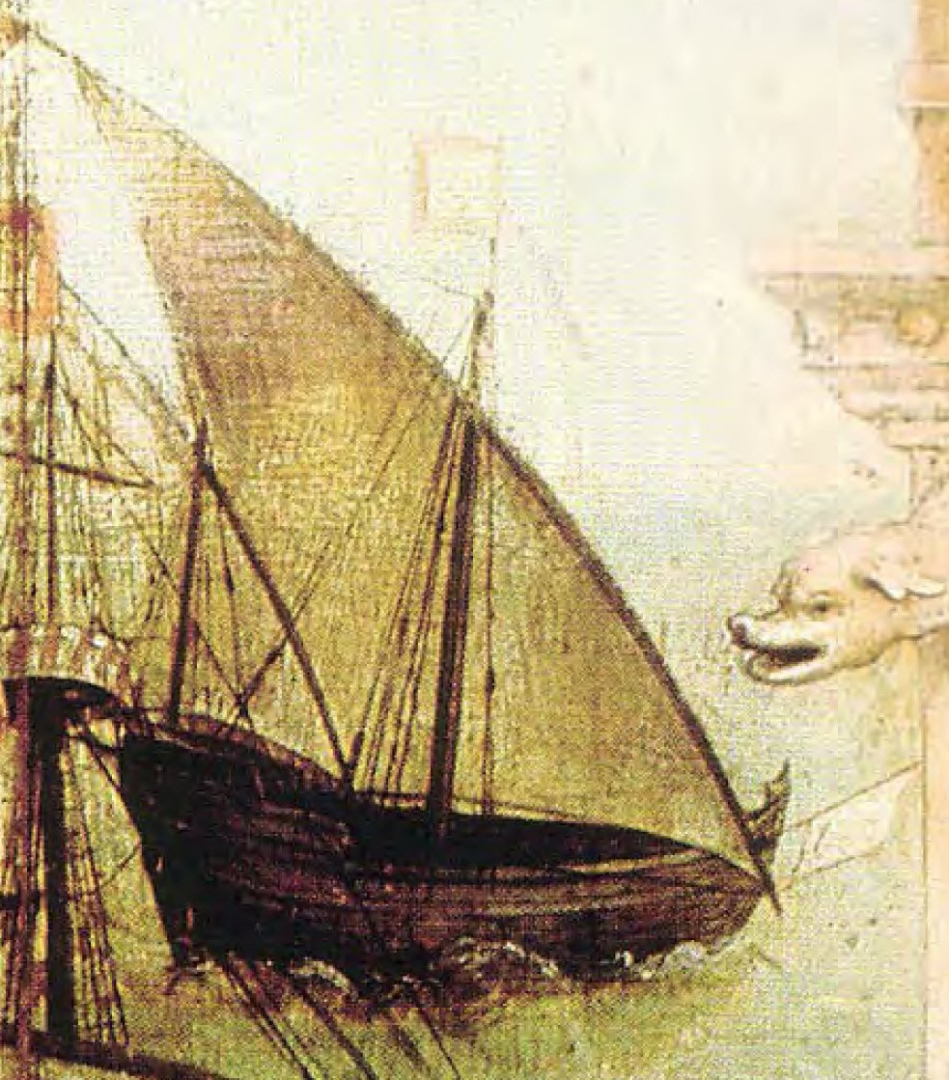
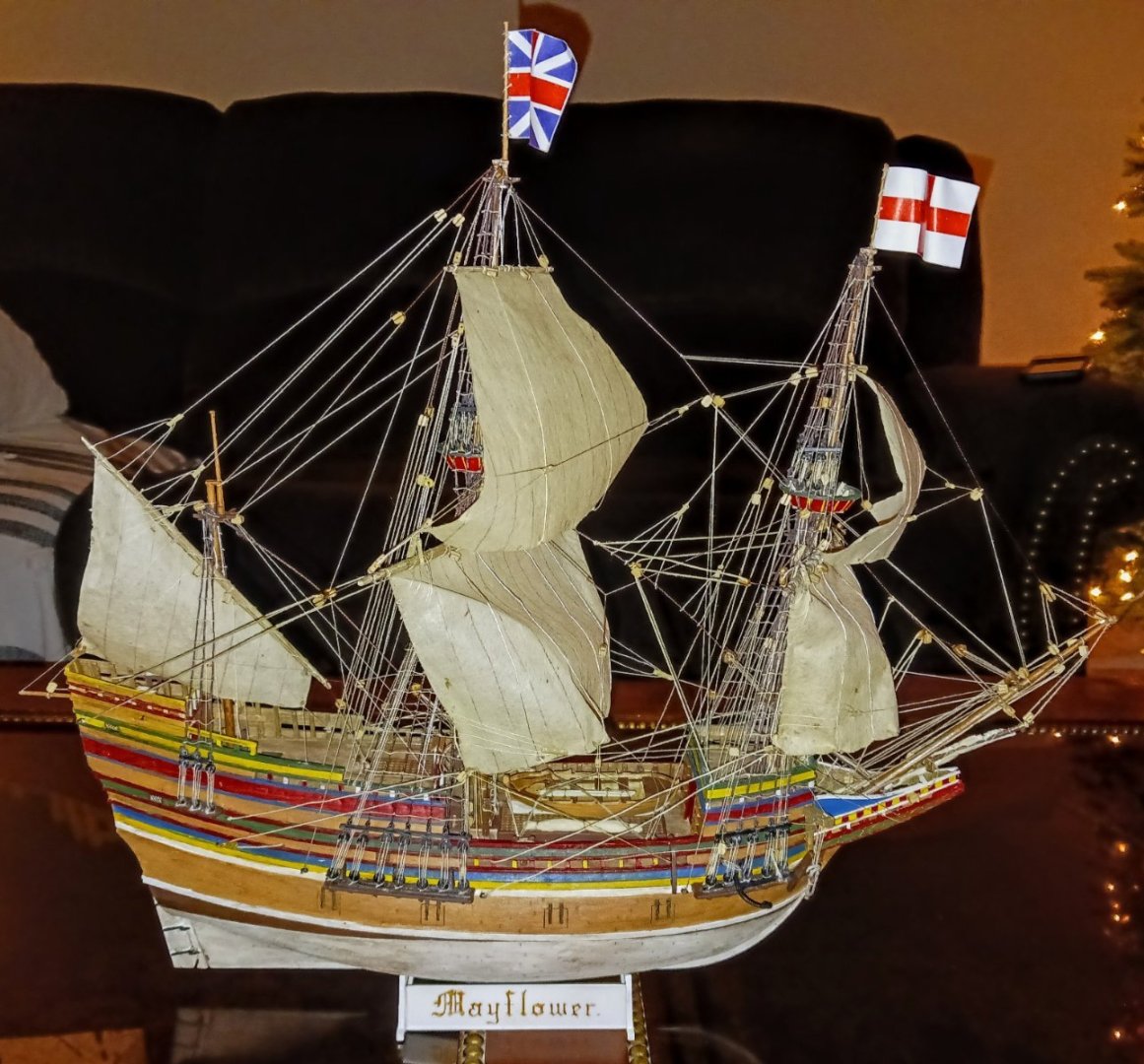
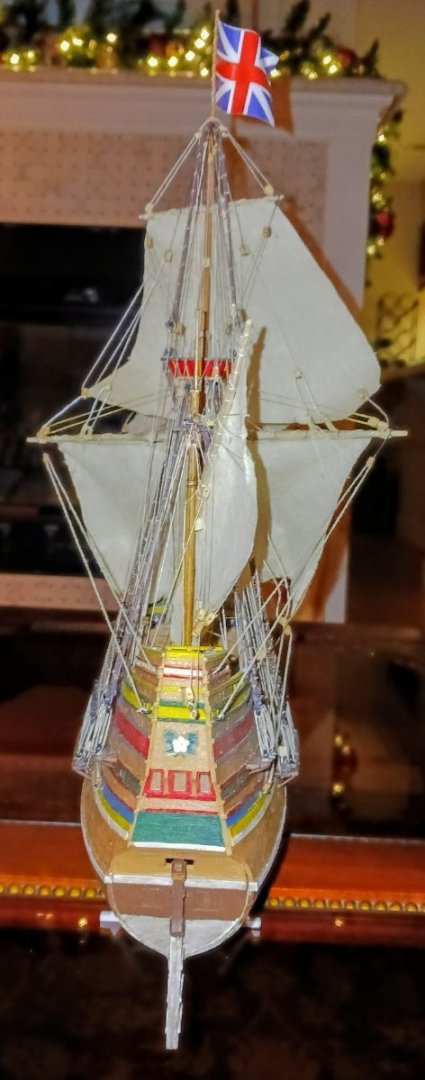
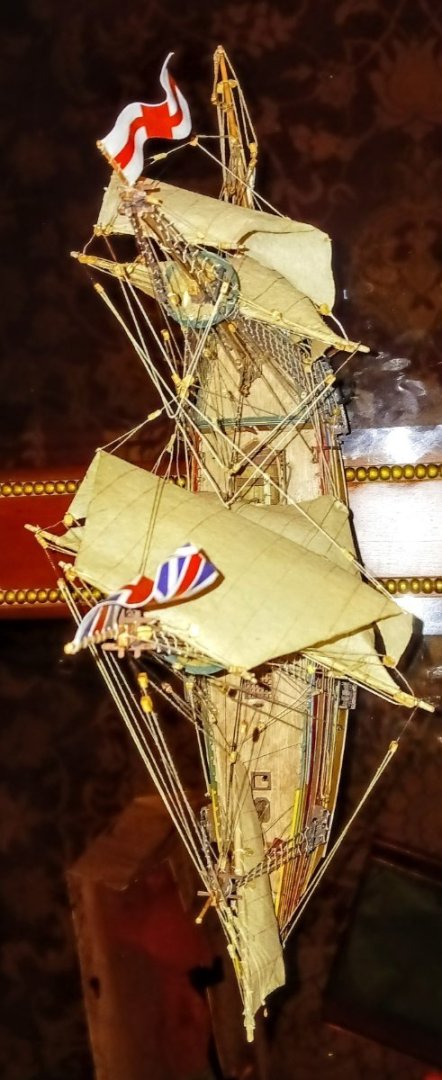
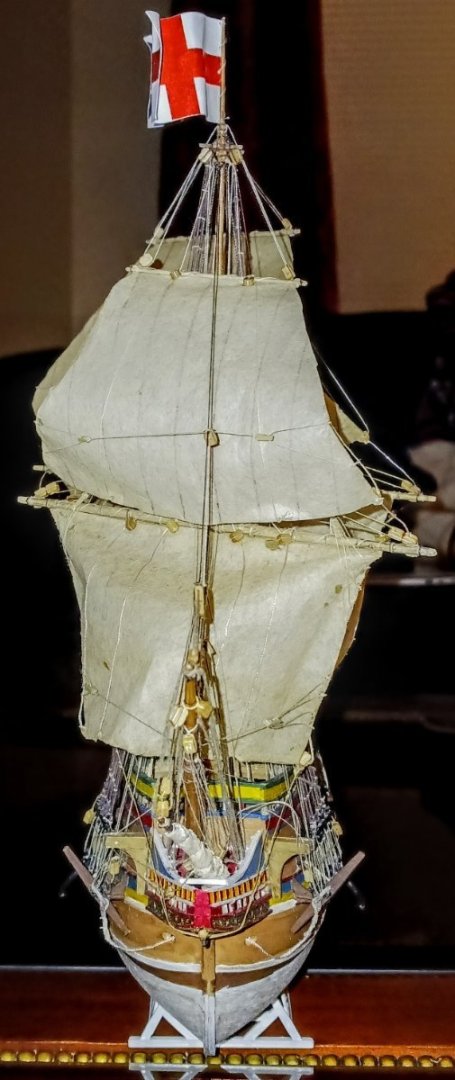
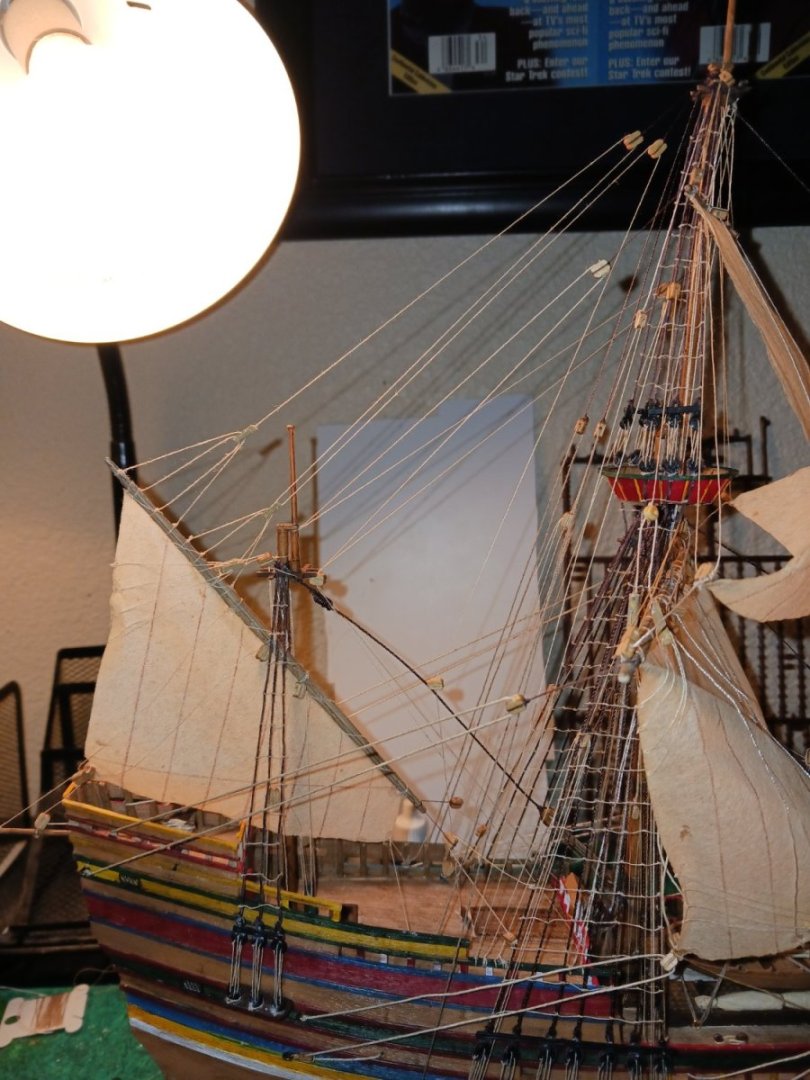
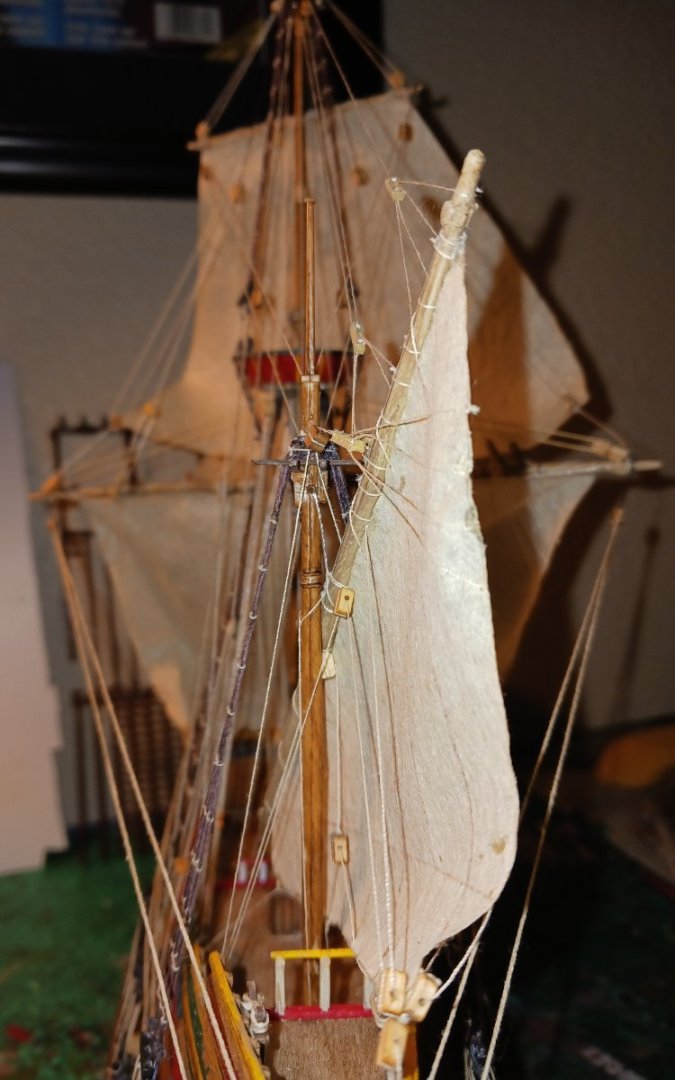
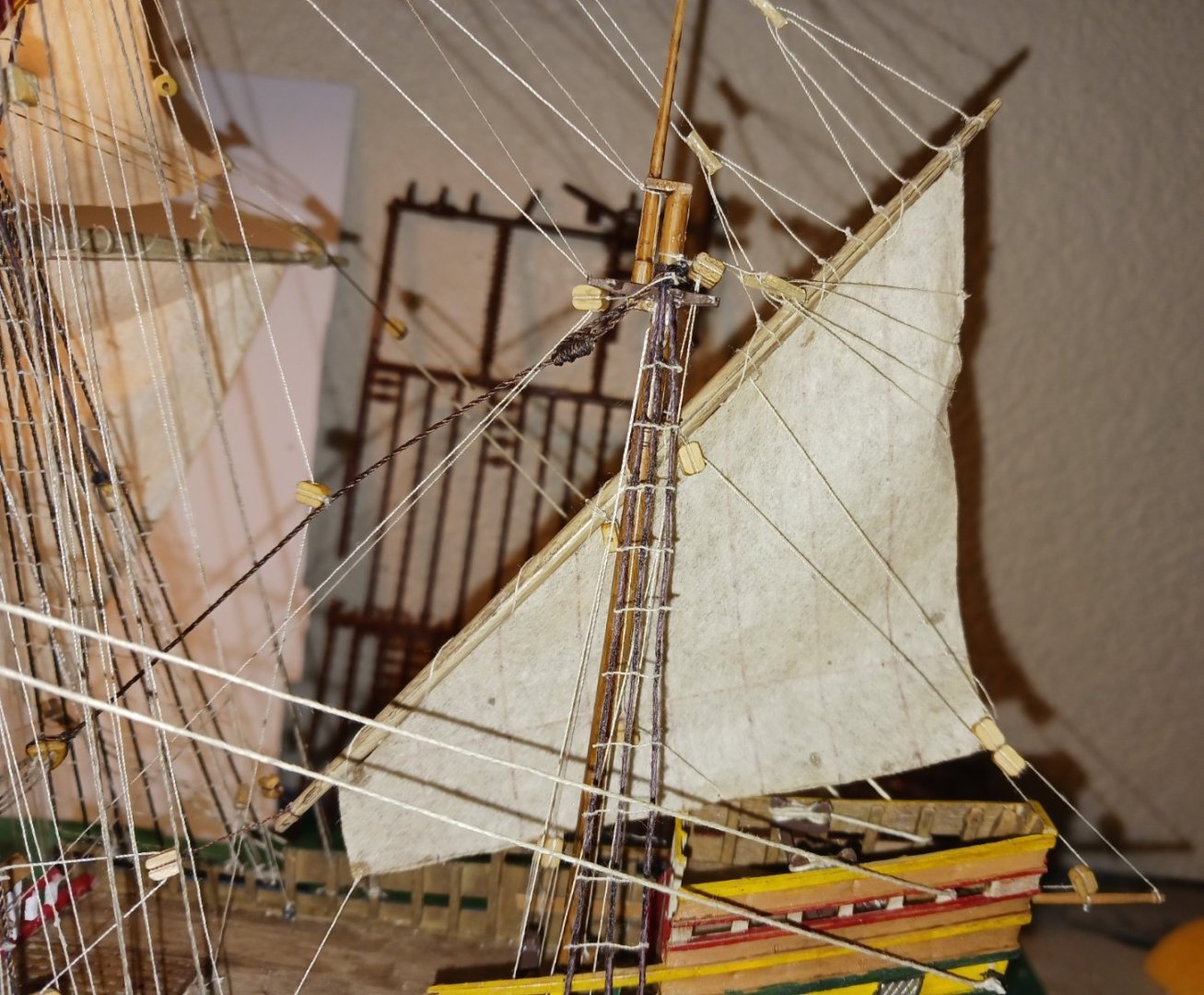
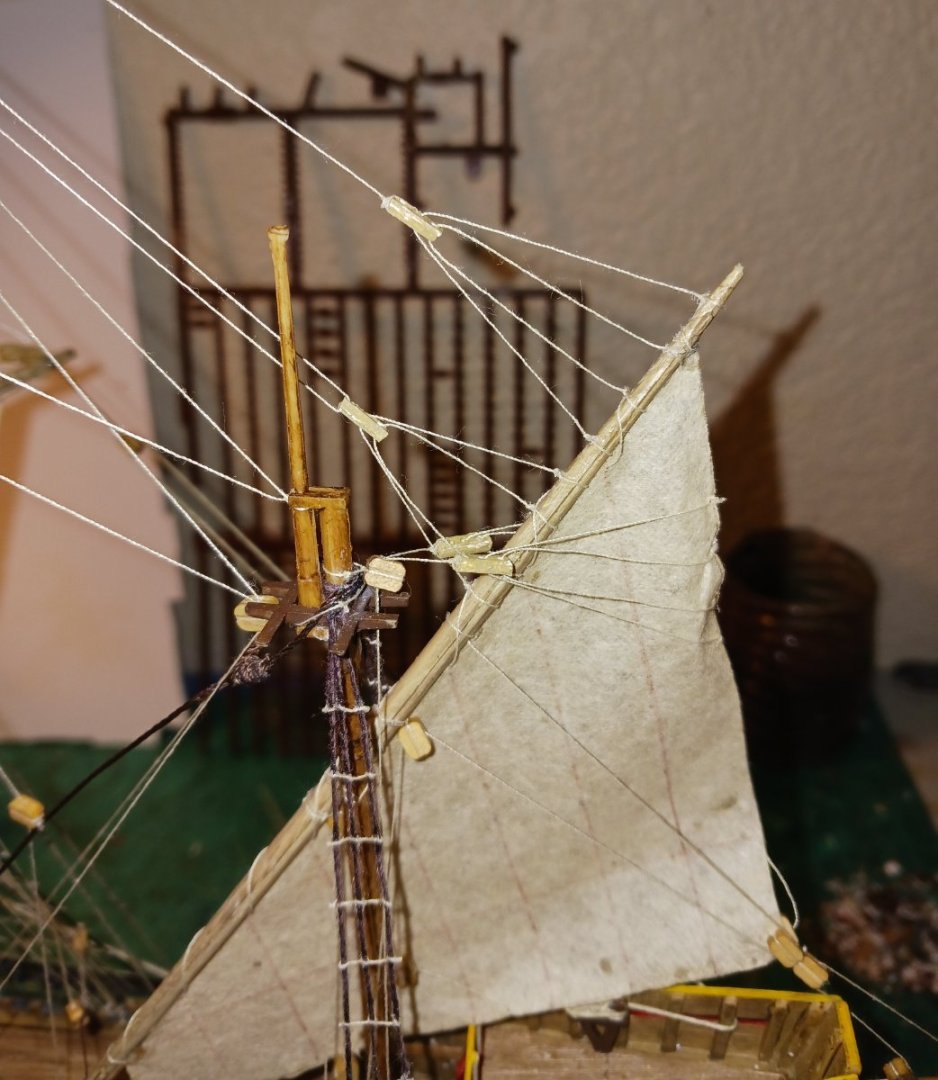
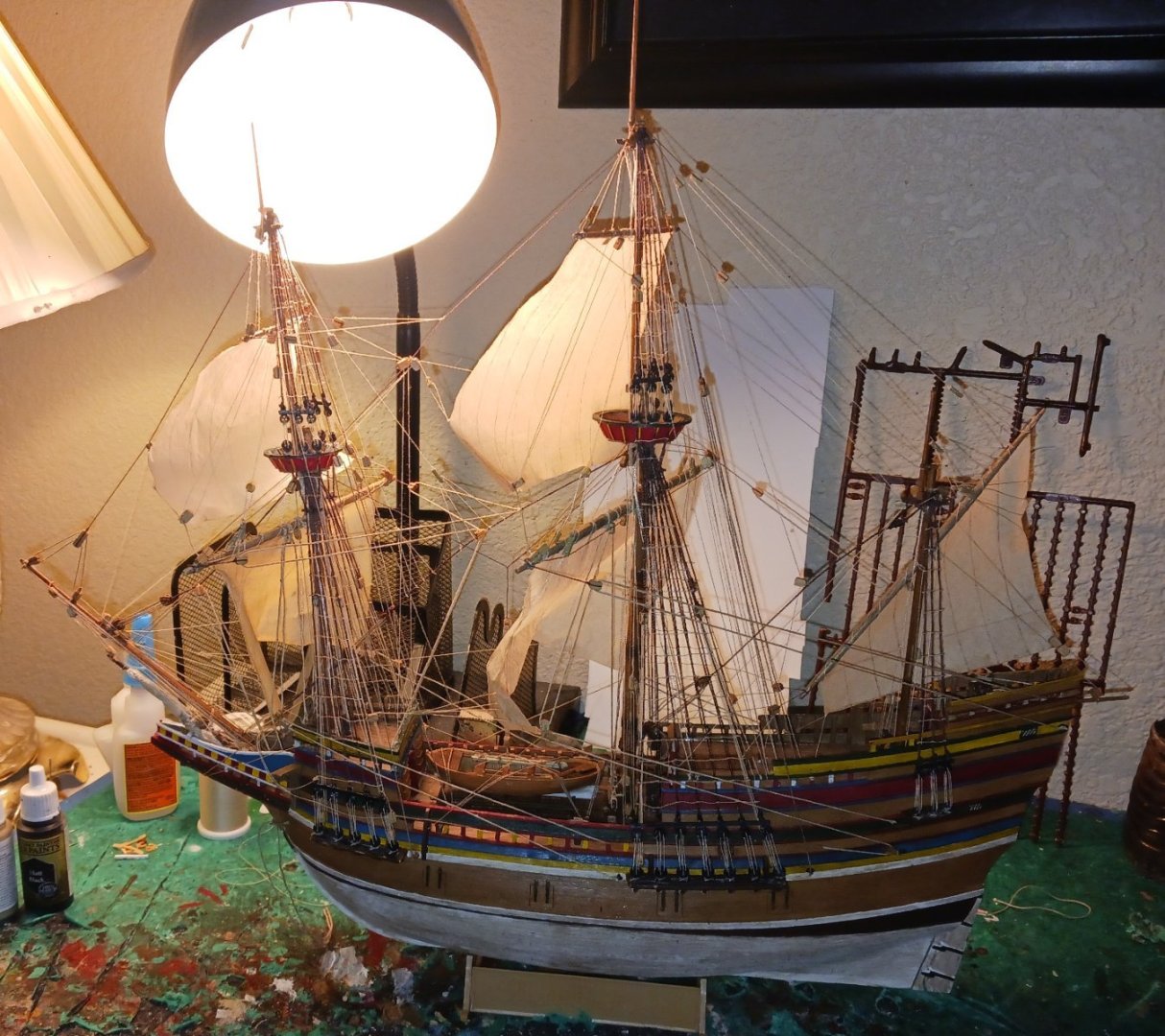
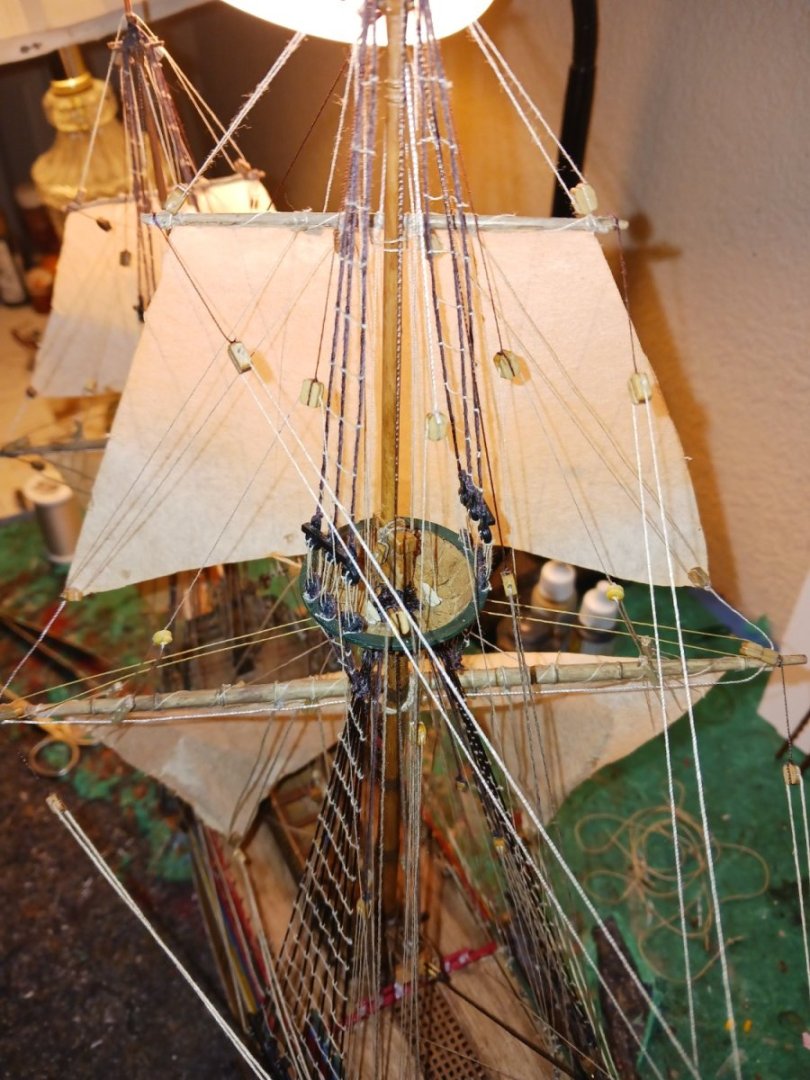
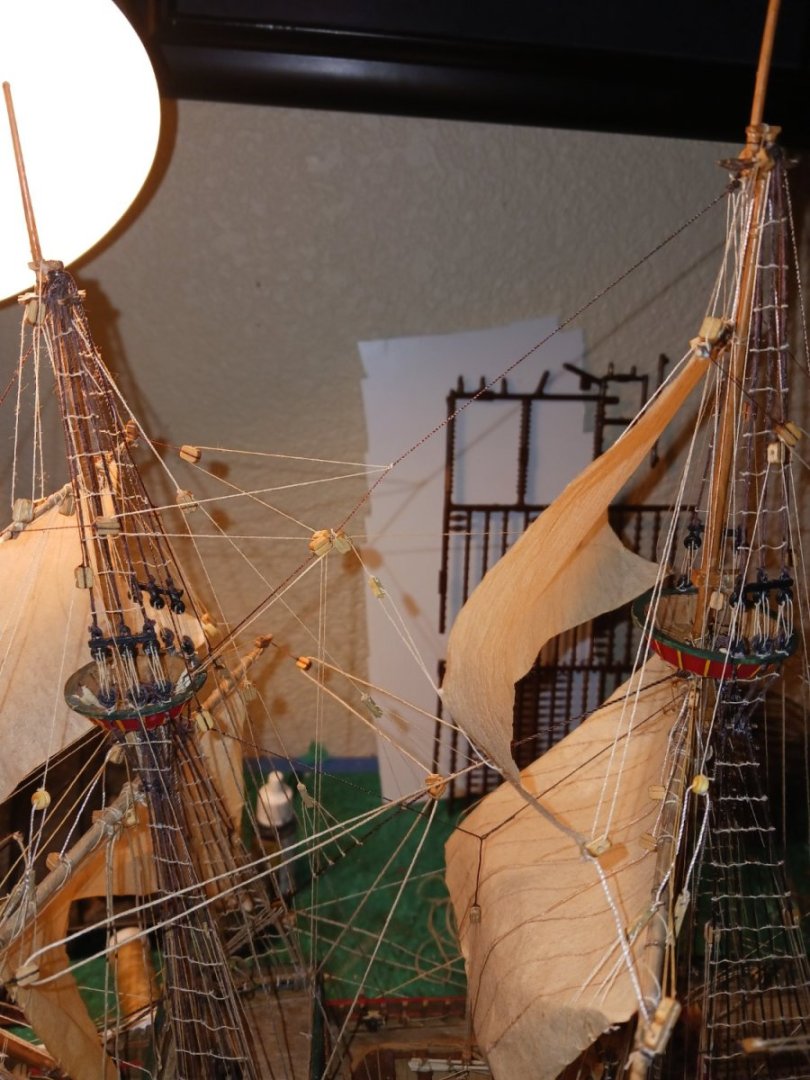
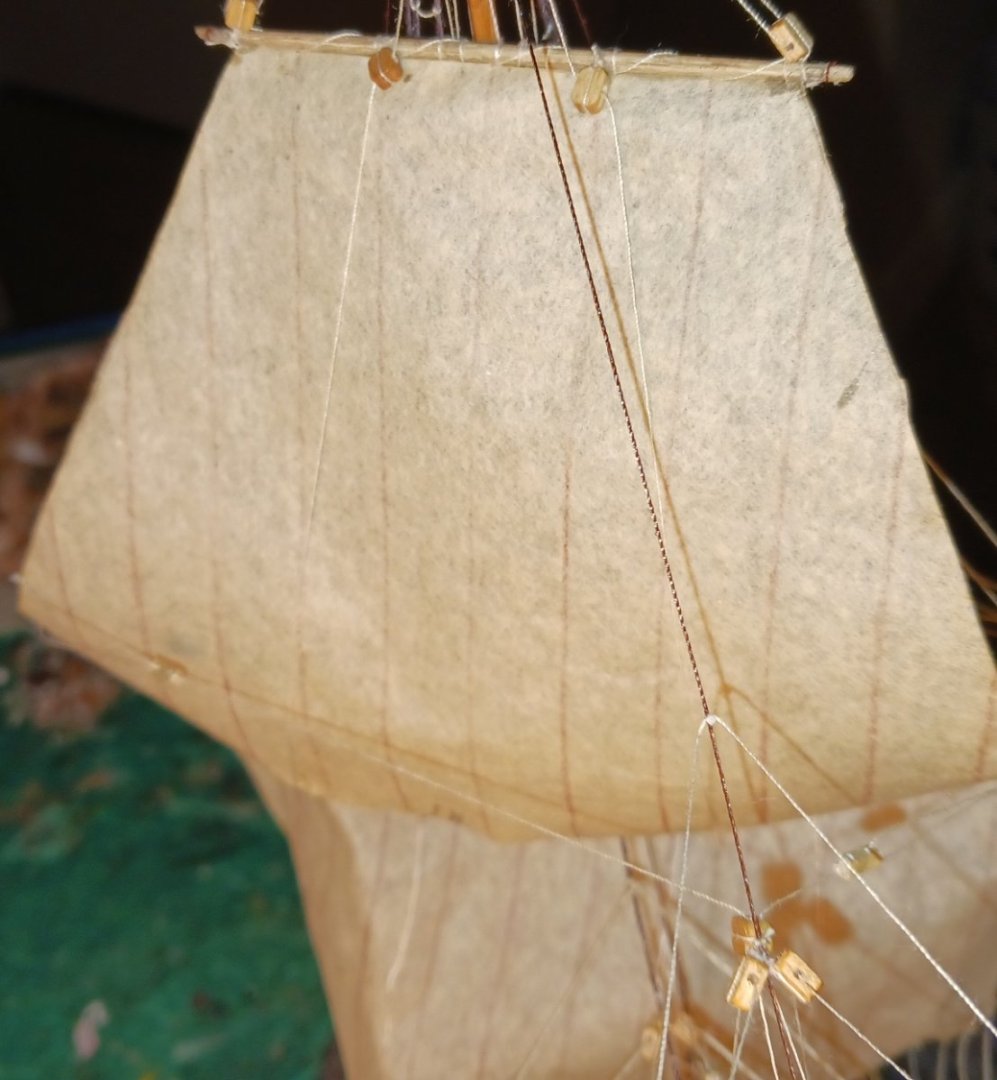
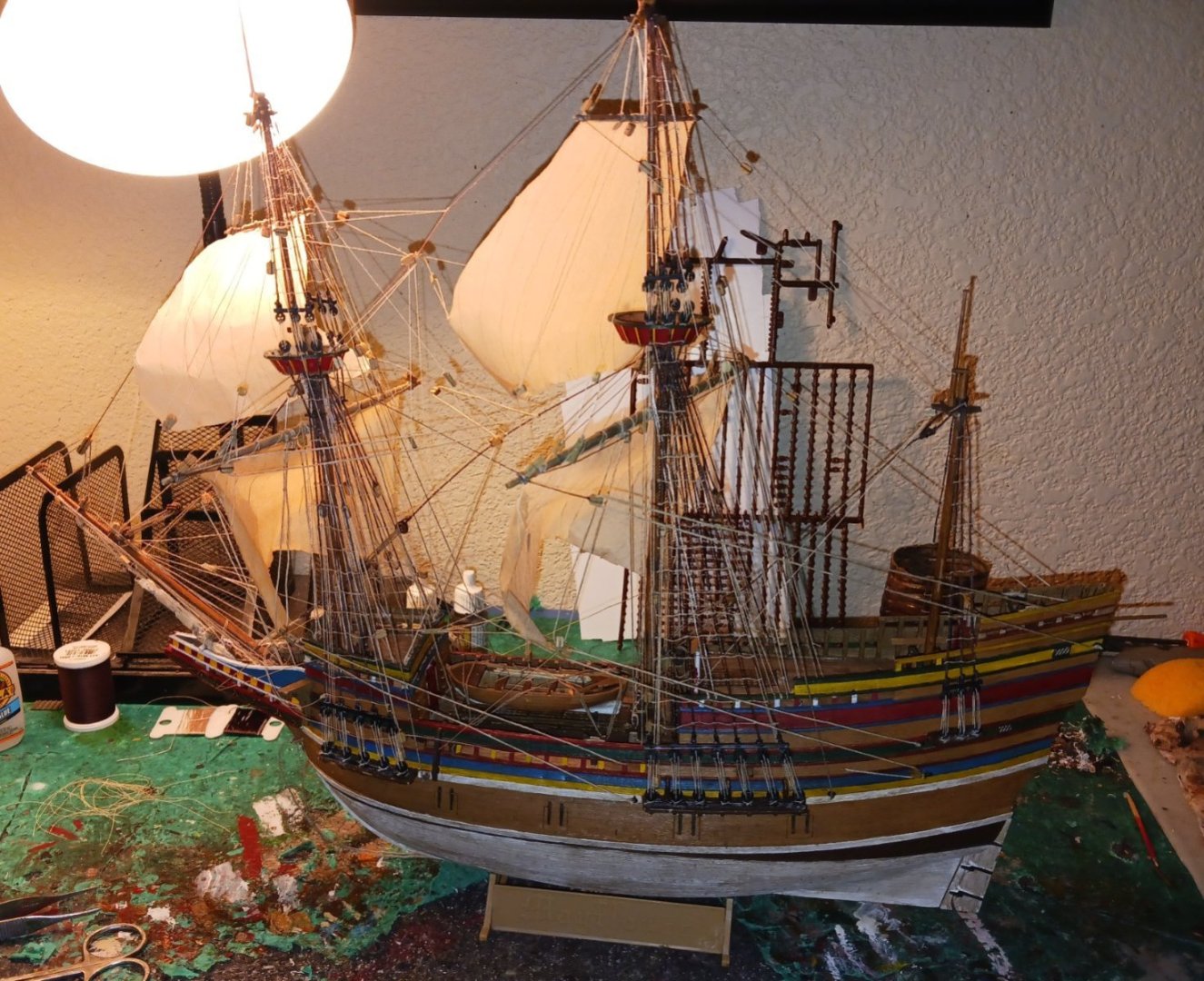
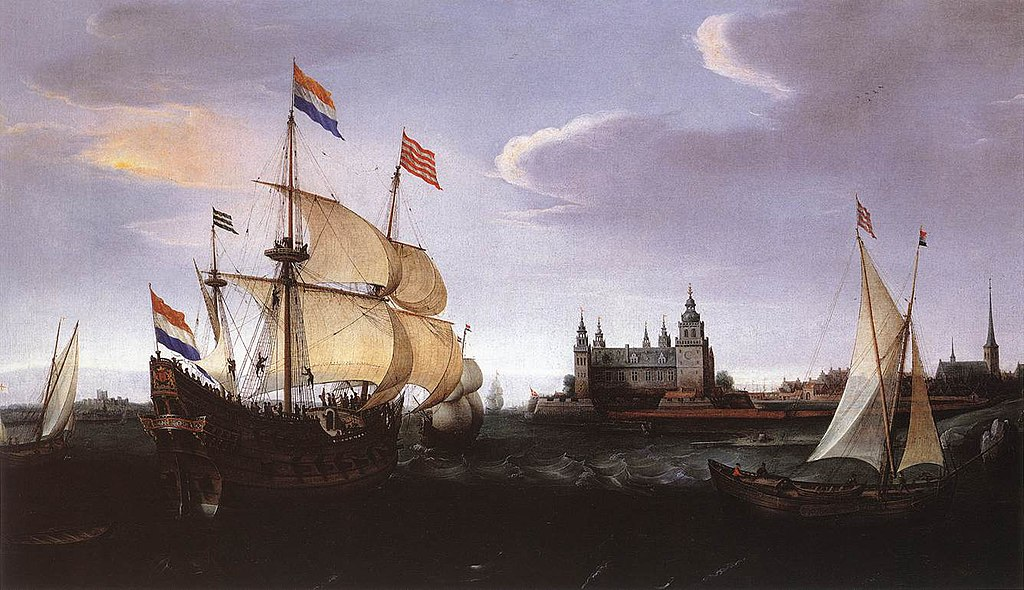
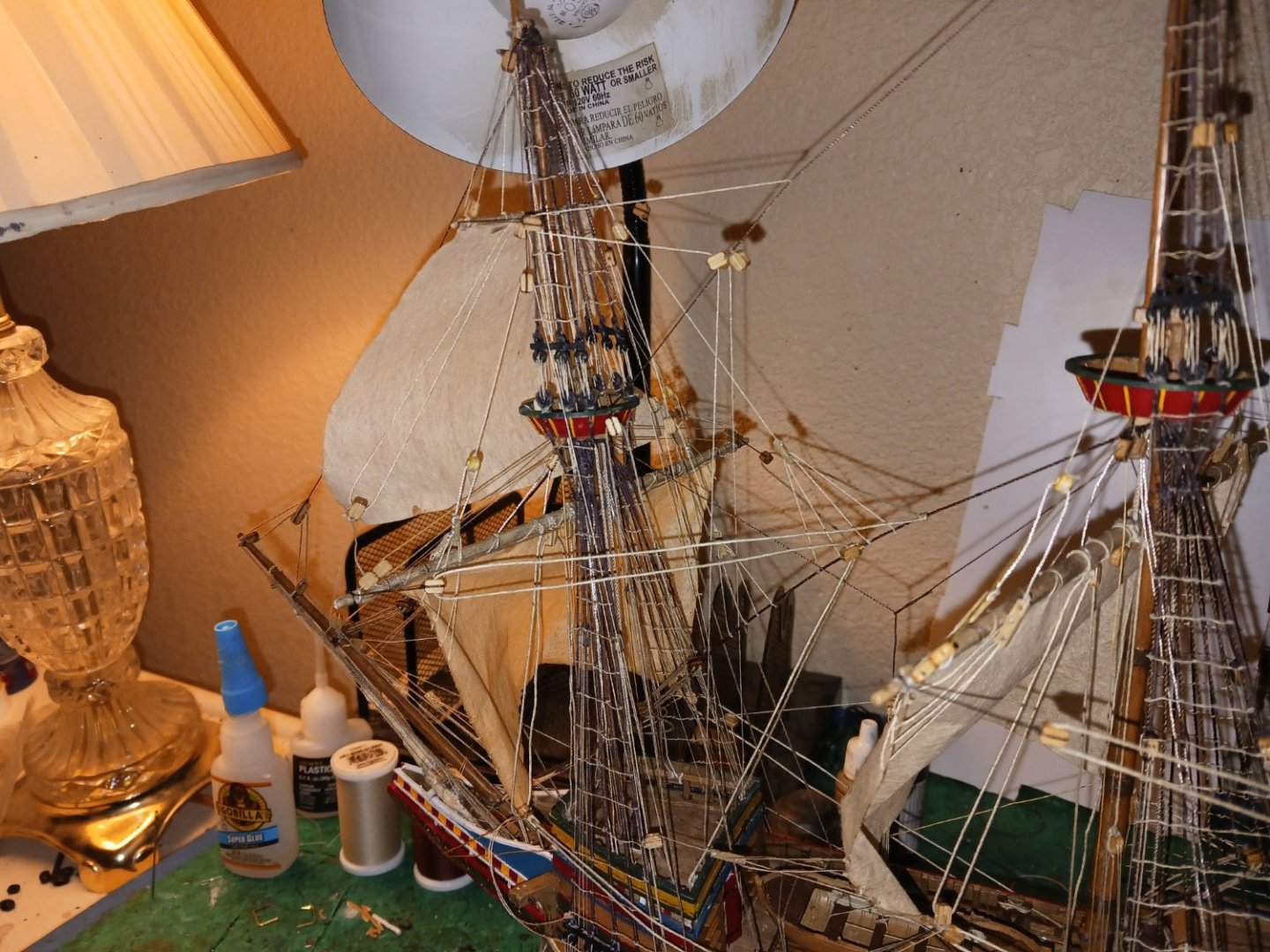
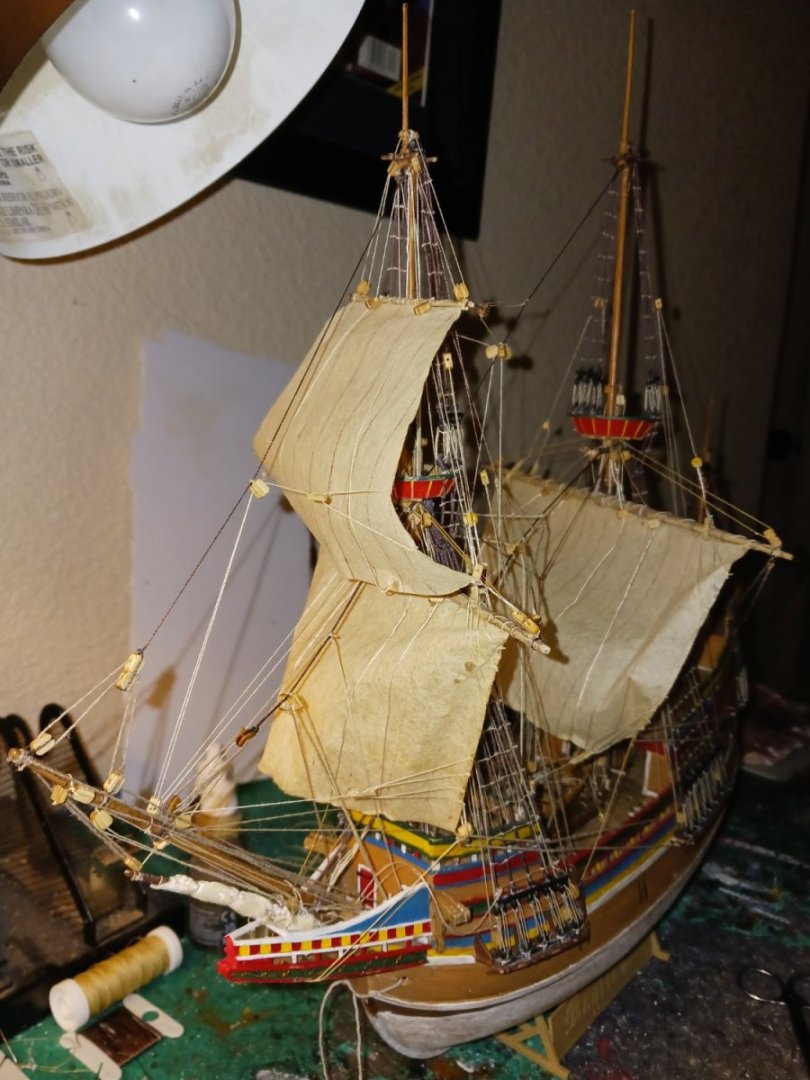
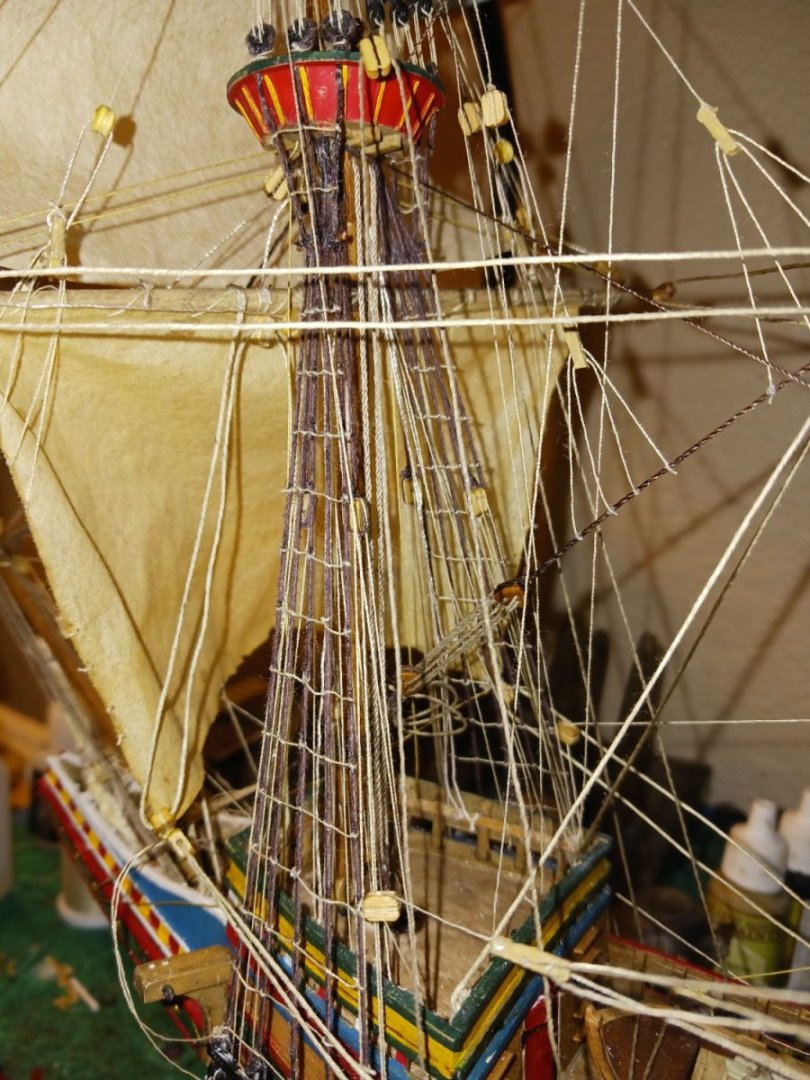
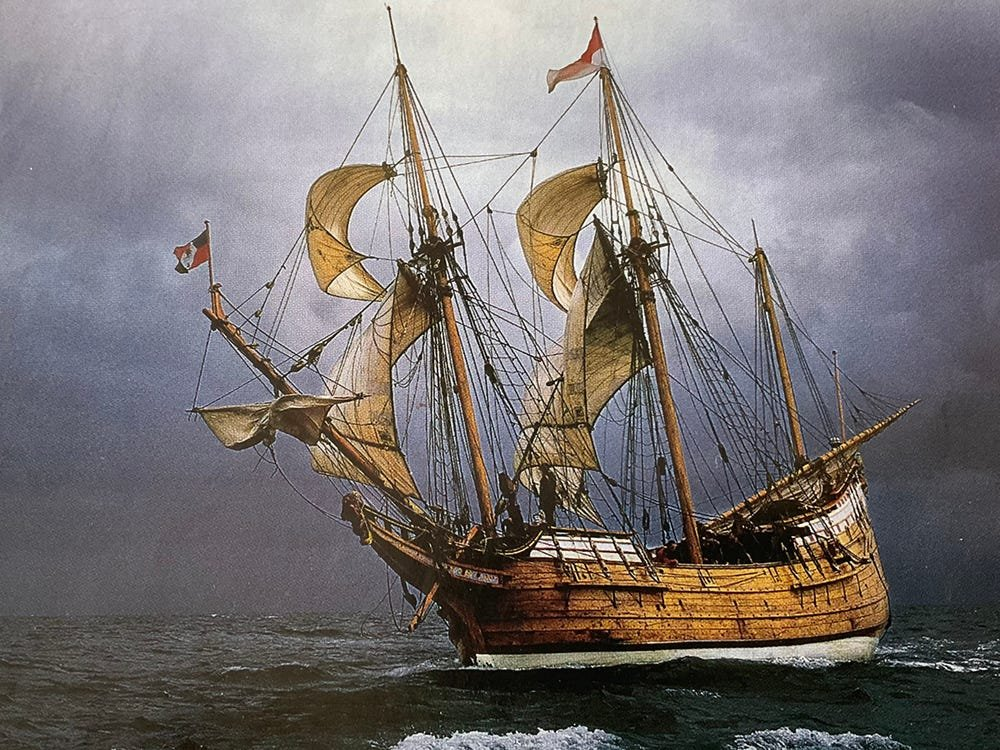
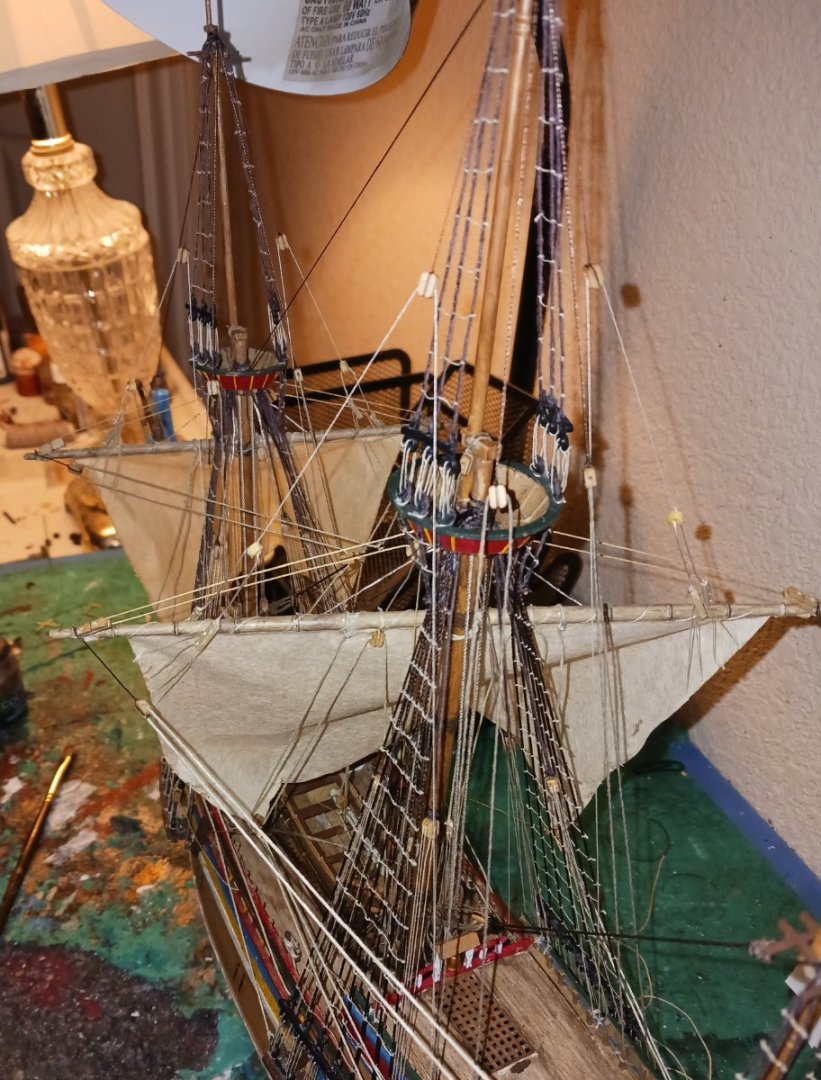
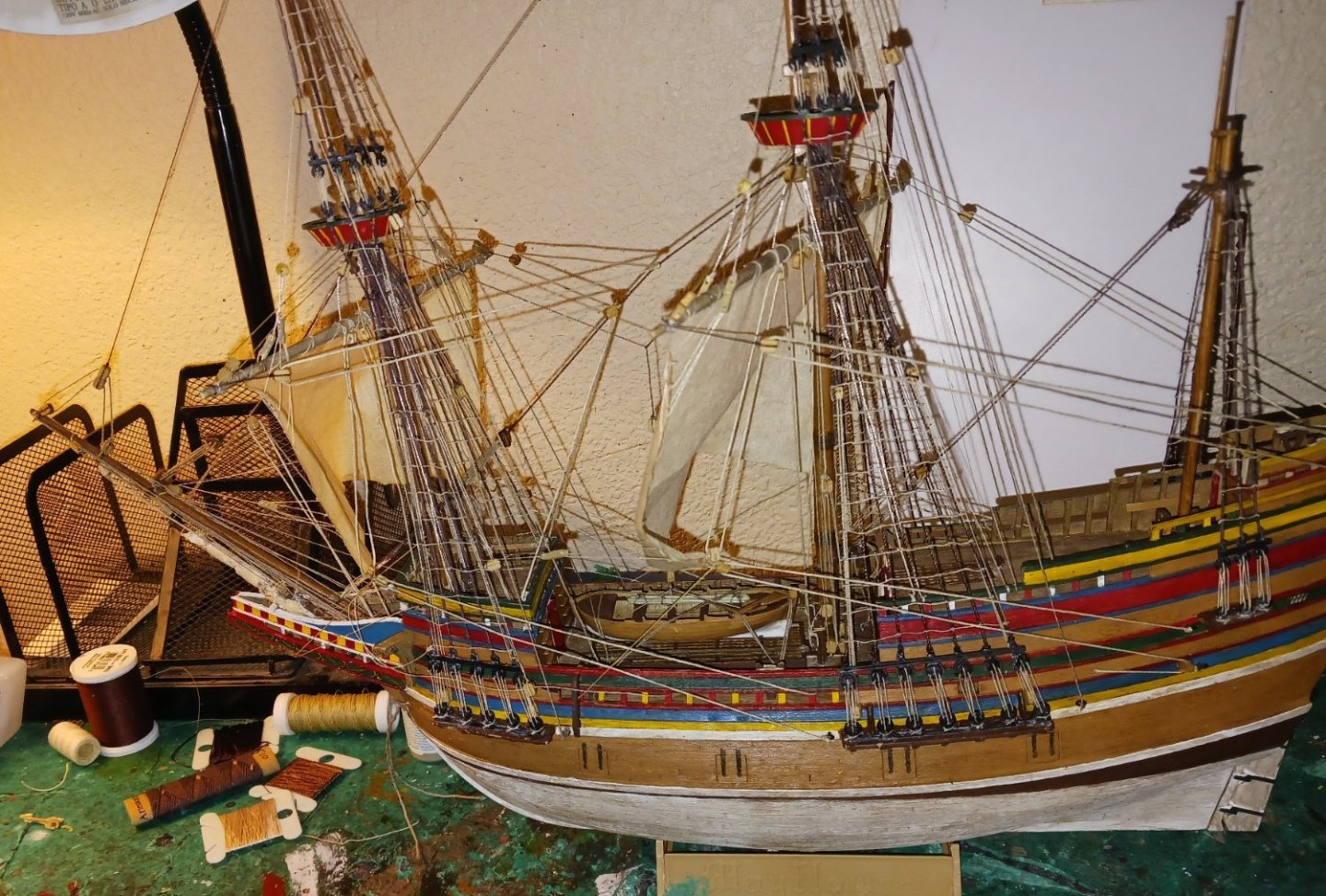
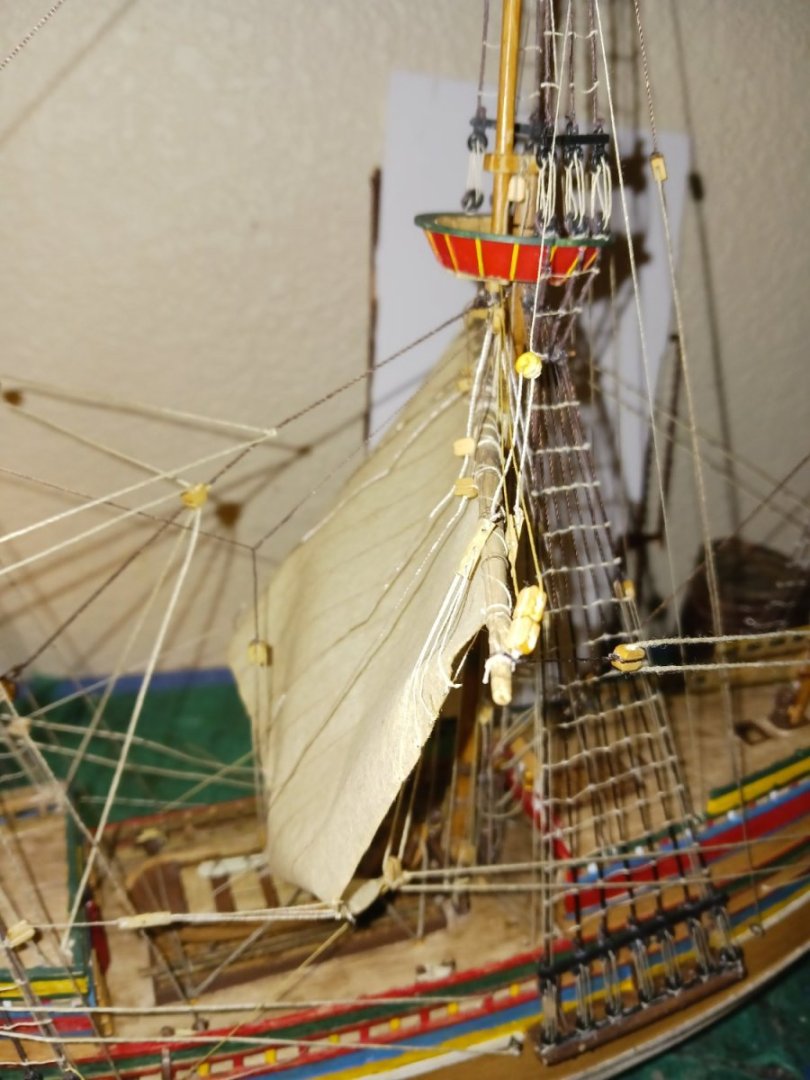
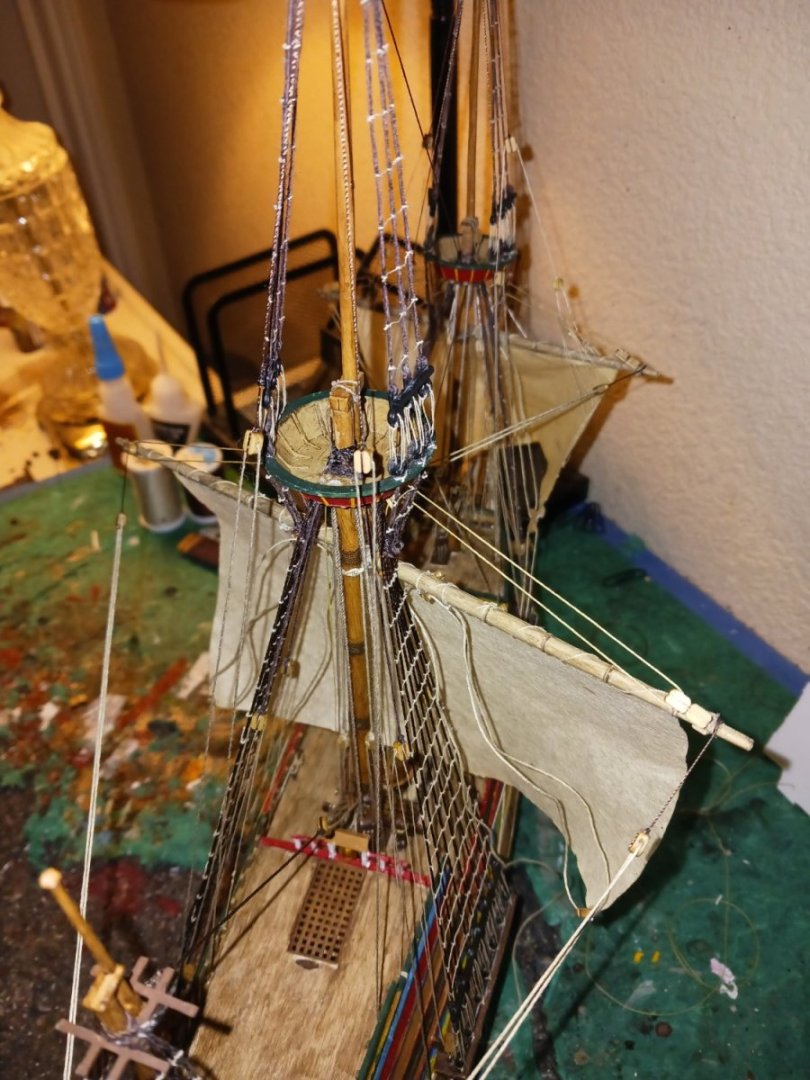
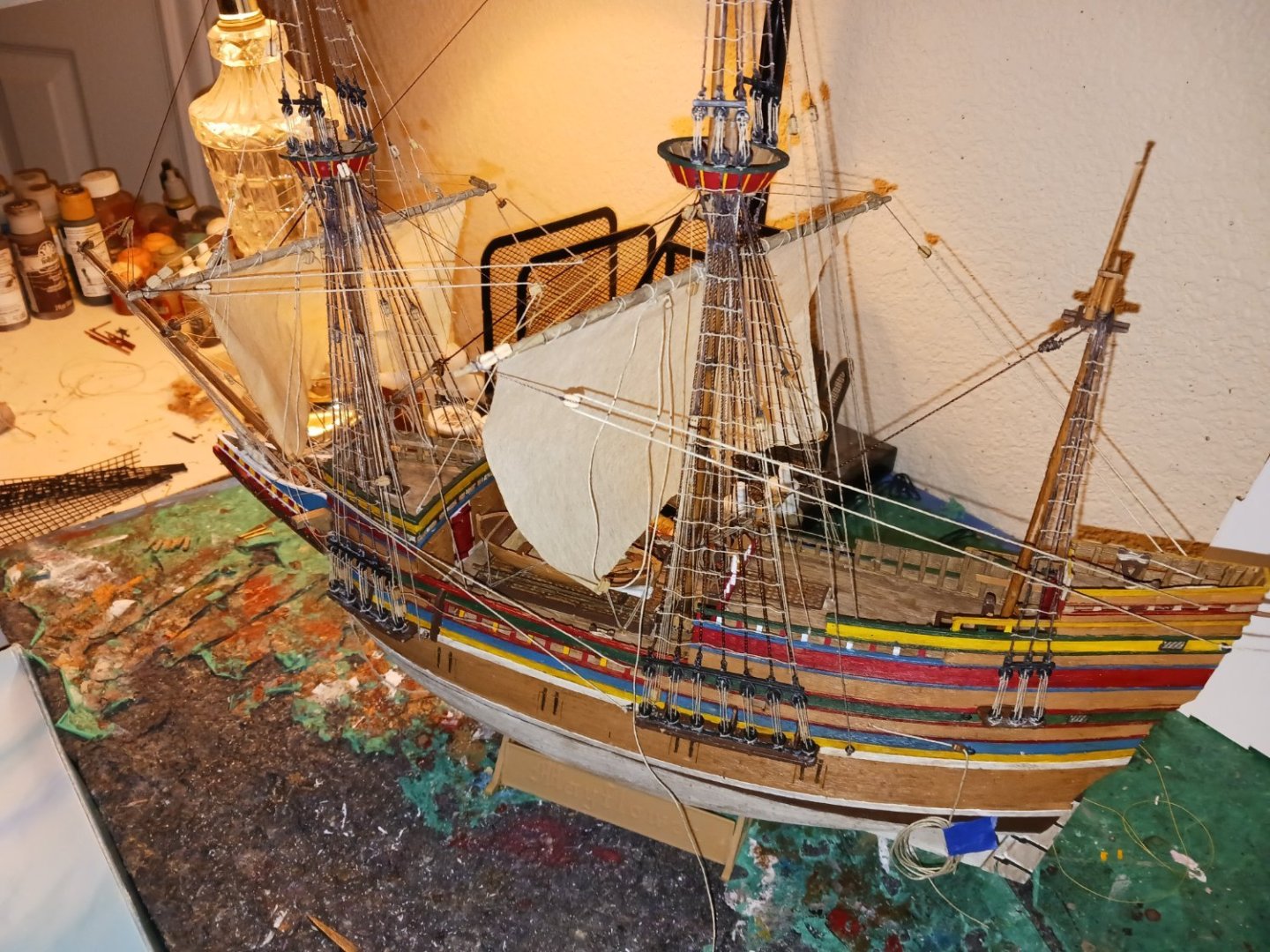
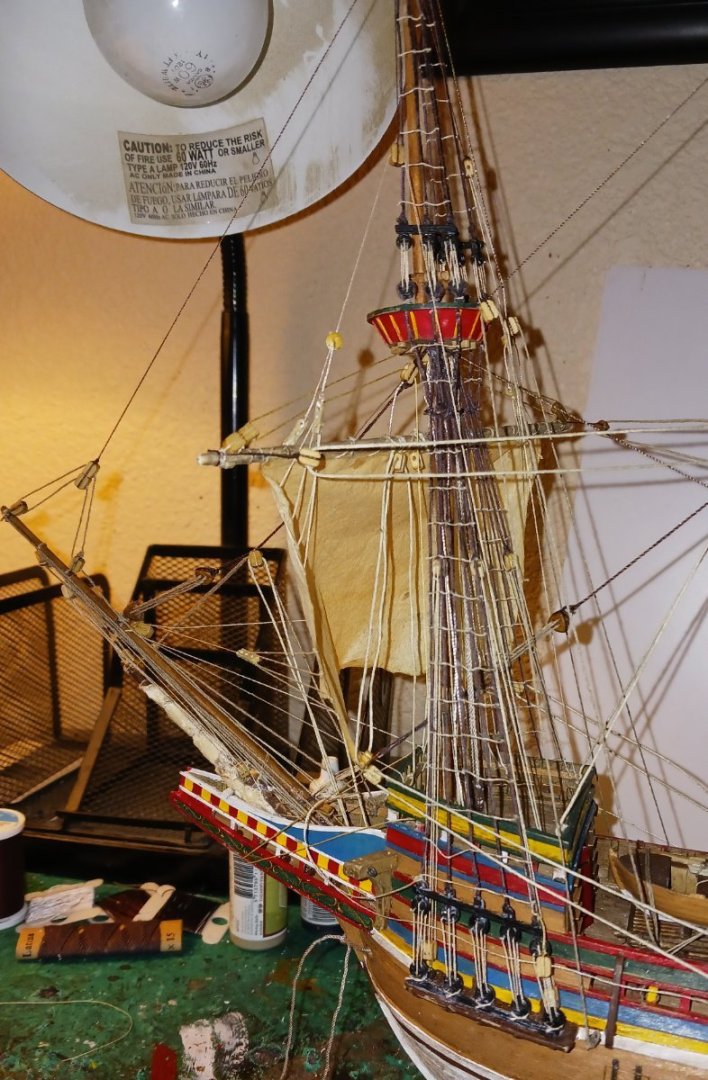
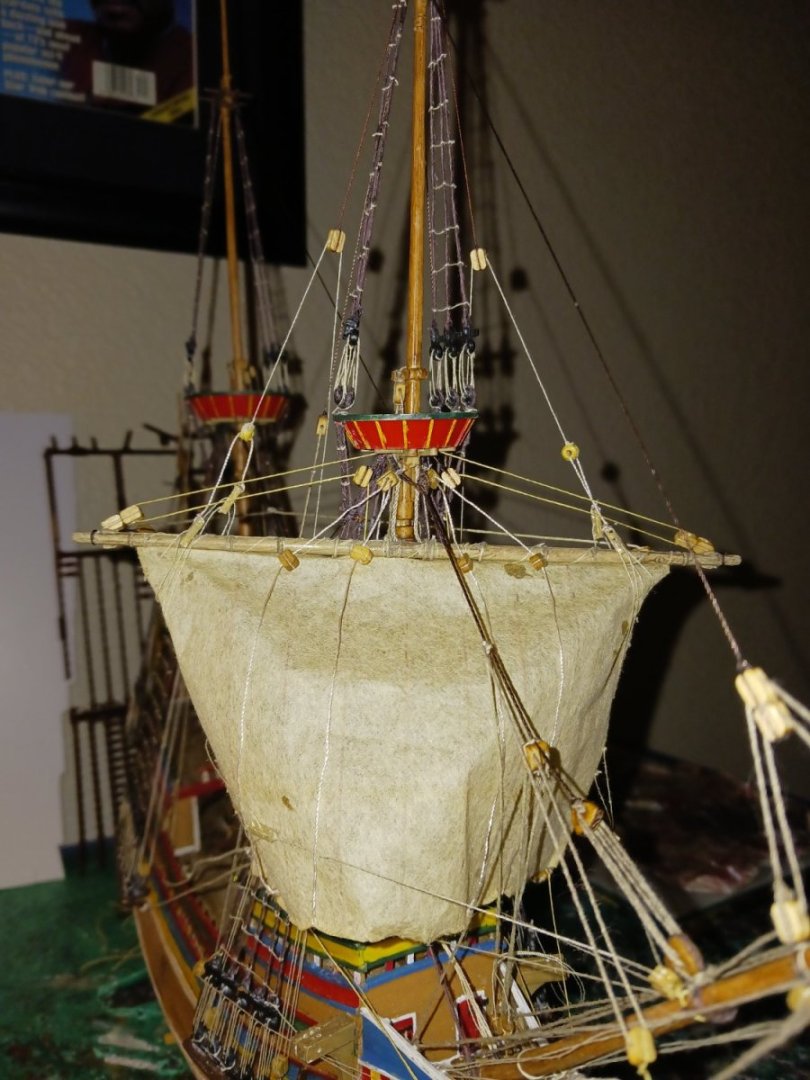
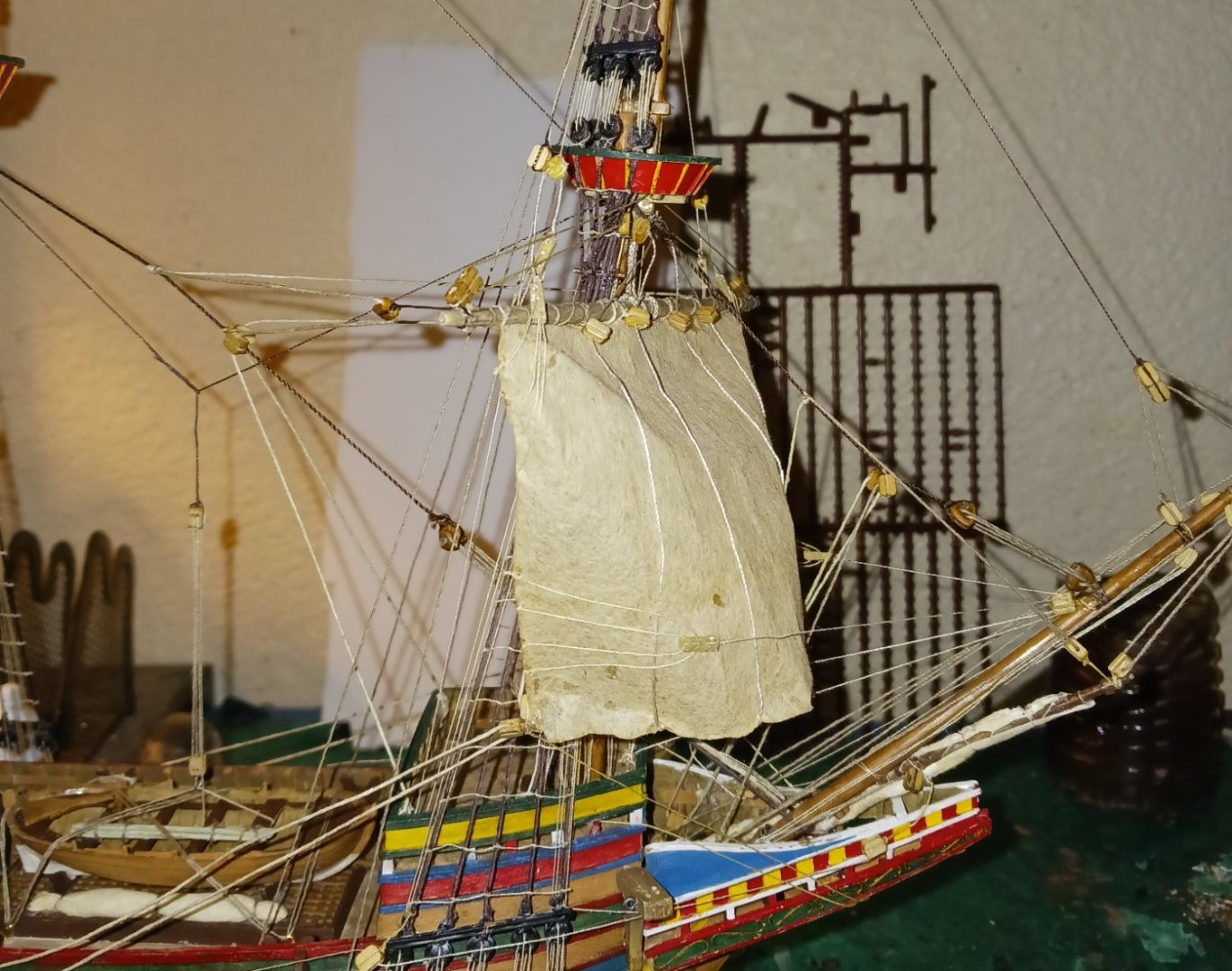
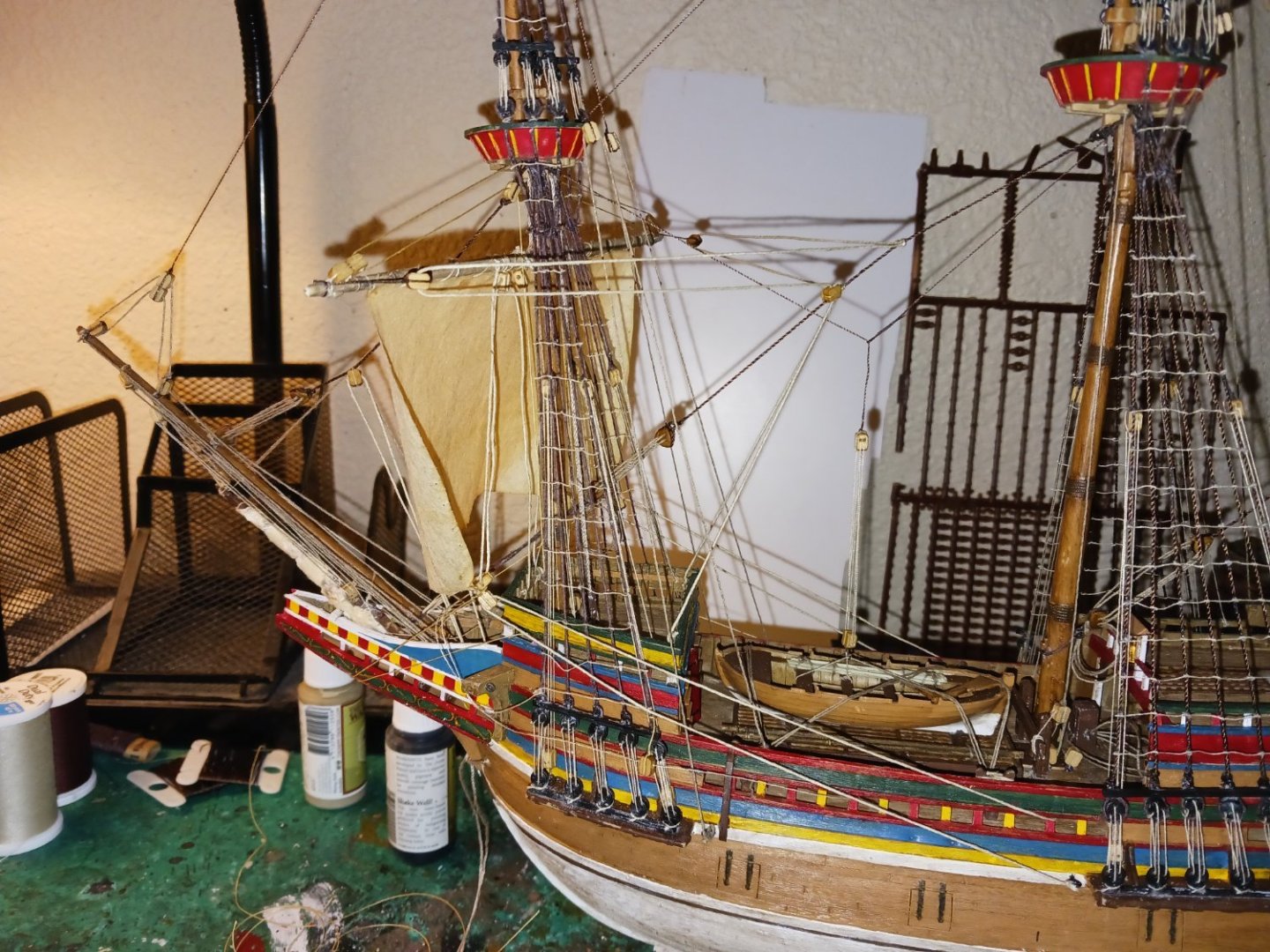
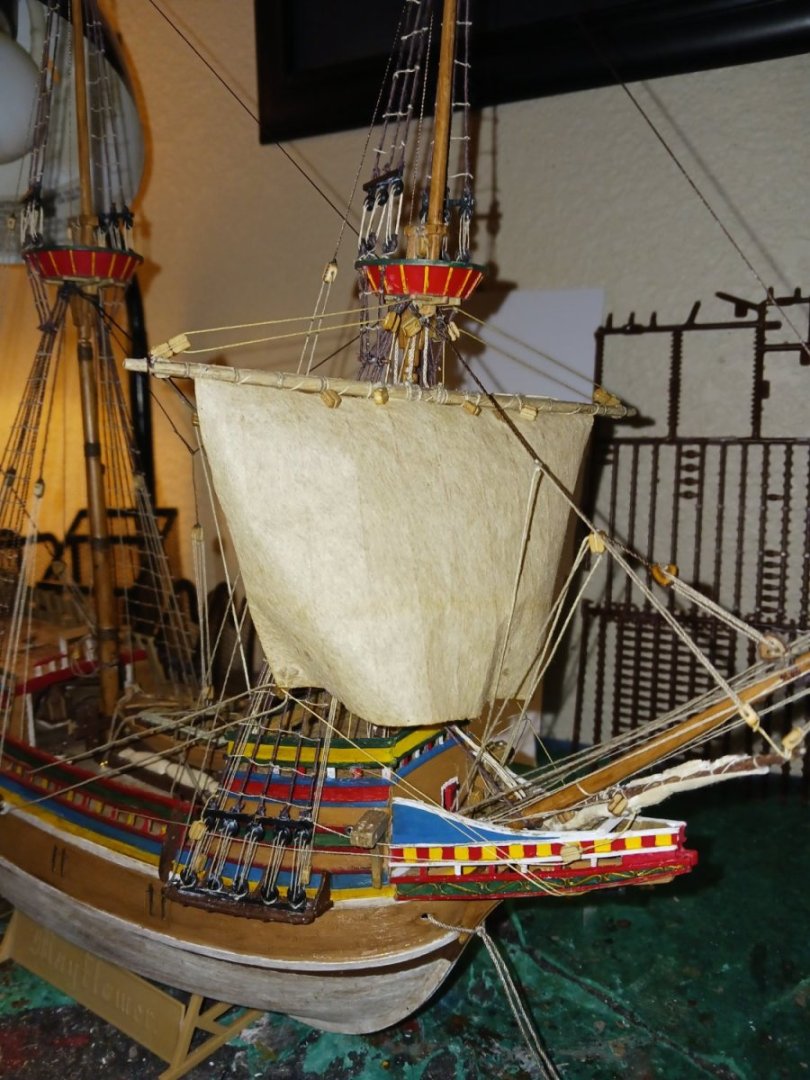
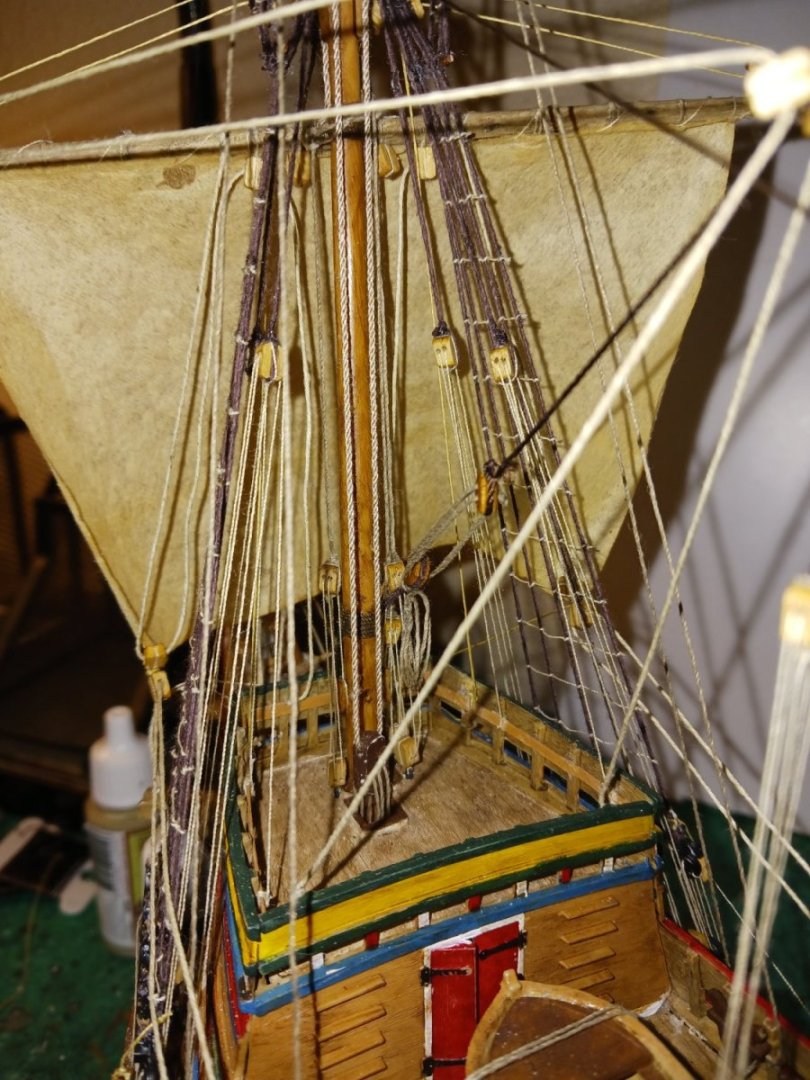
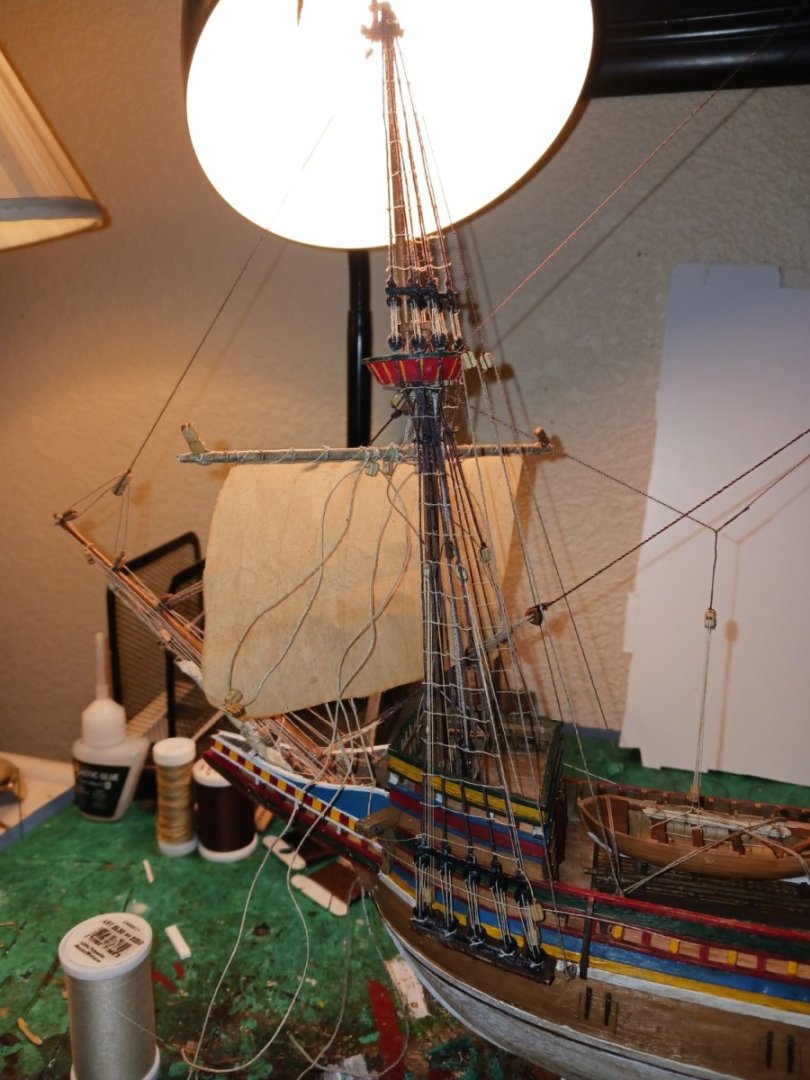
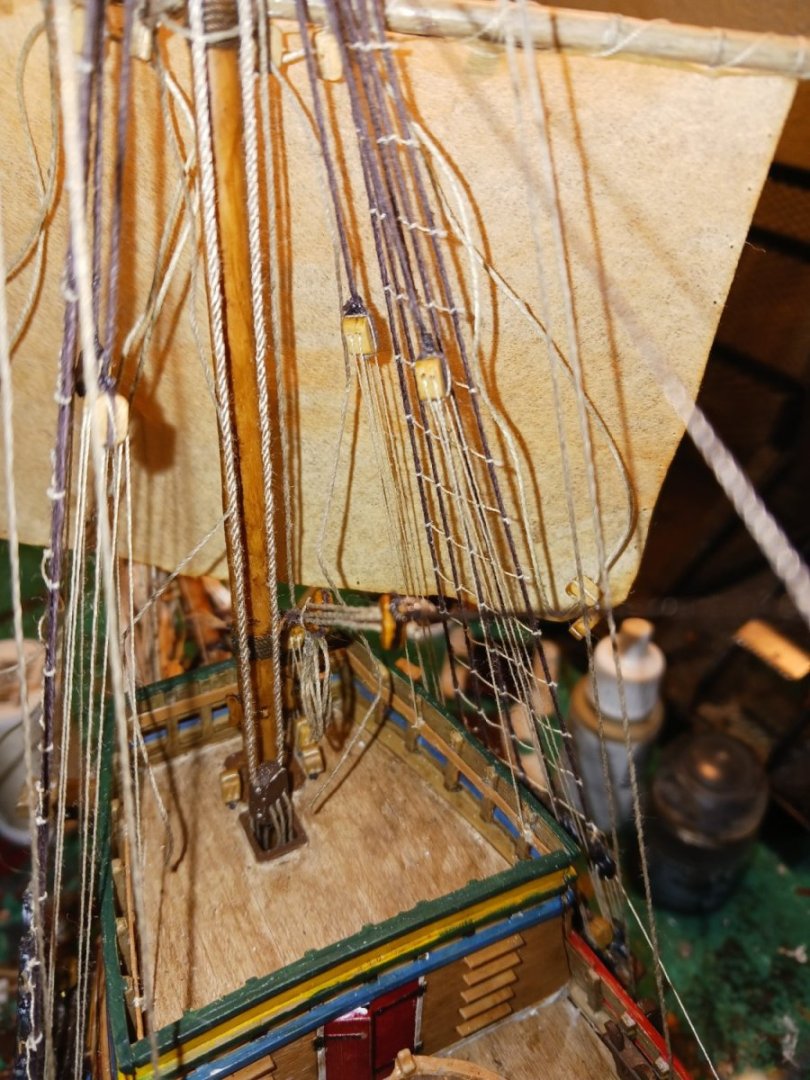
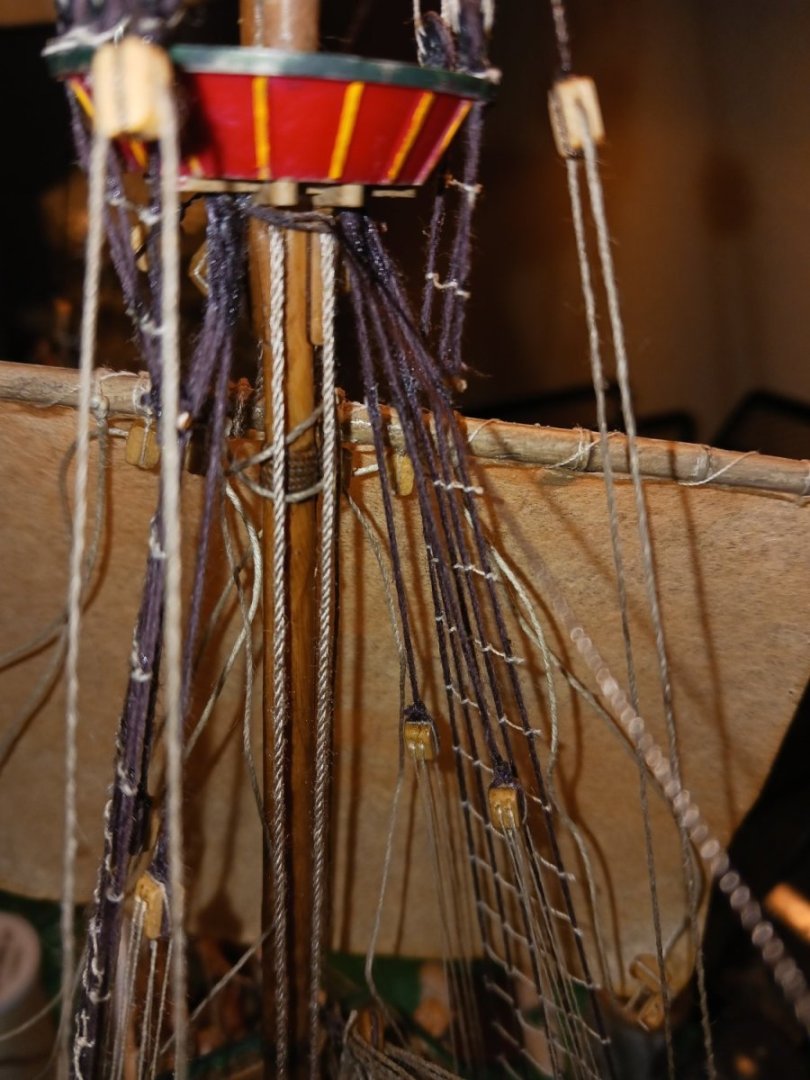
Sao Paulo 1441 by Ferrus Manus - FINISHED - Heller - 1/75 - Theoretical Reconstruction
in - Kit subjects built Up to and including 1500 AD
Posted
#3. Wooldings.
There is not a single image i've seen depicting a caravel with wooldings. My theory regarding this is that because of the relatively small size of the ships and thus their masts, wooldings (and possibly wedges) were not necessary as they did not need "built" masts.
Once again, for more information on built masts, Woodrat's carrack.